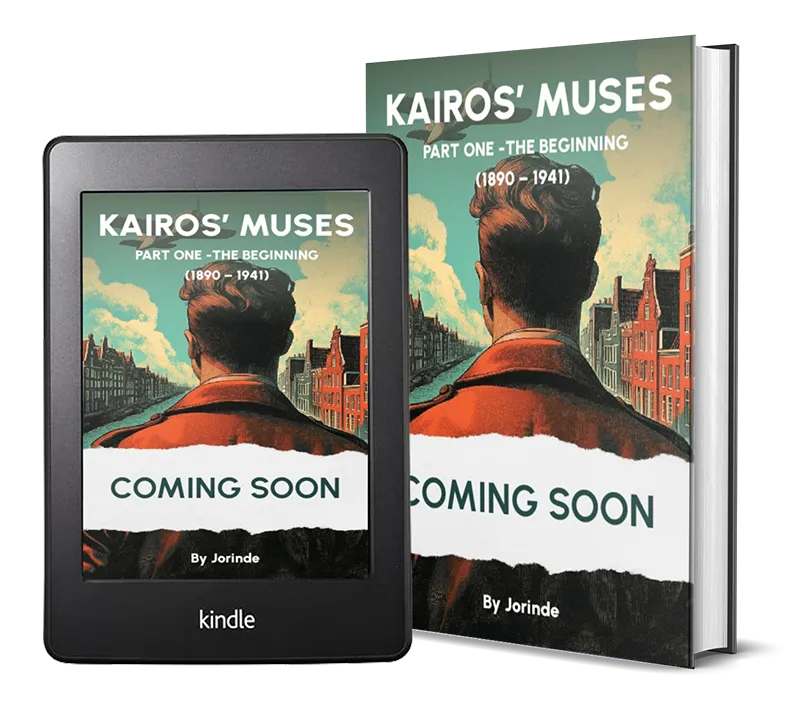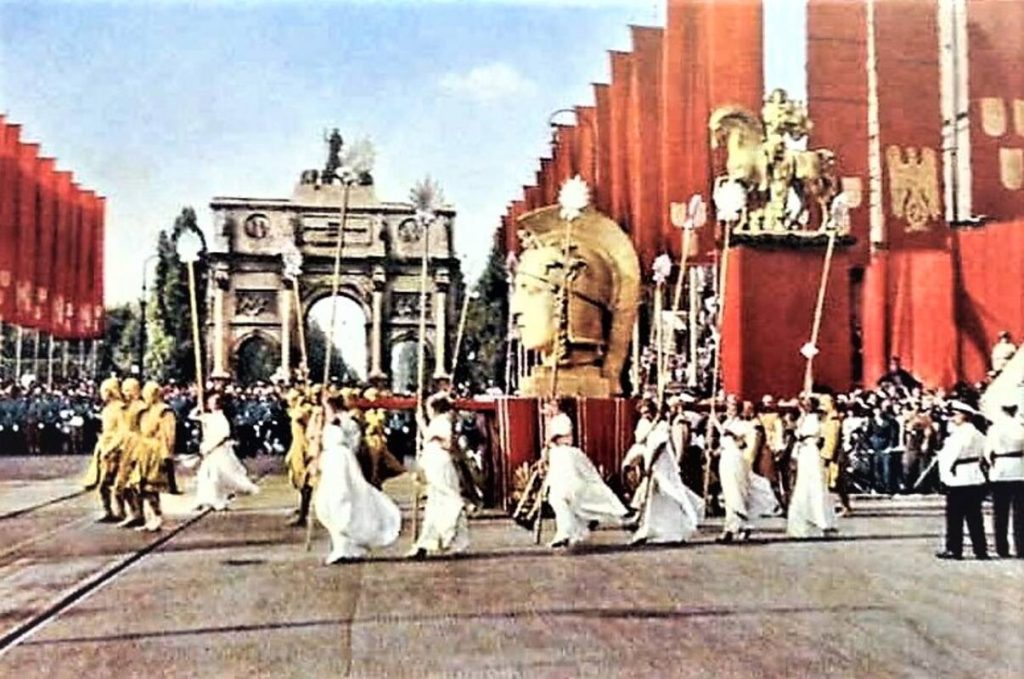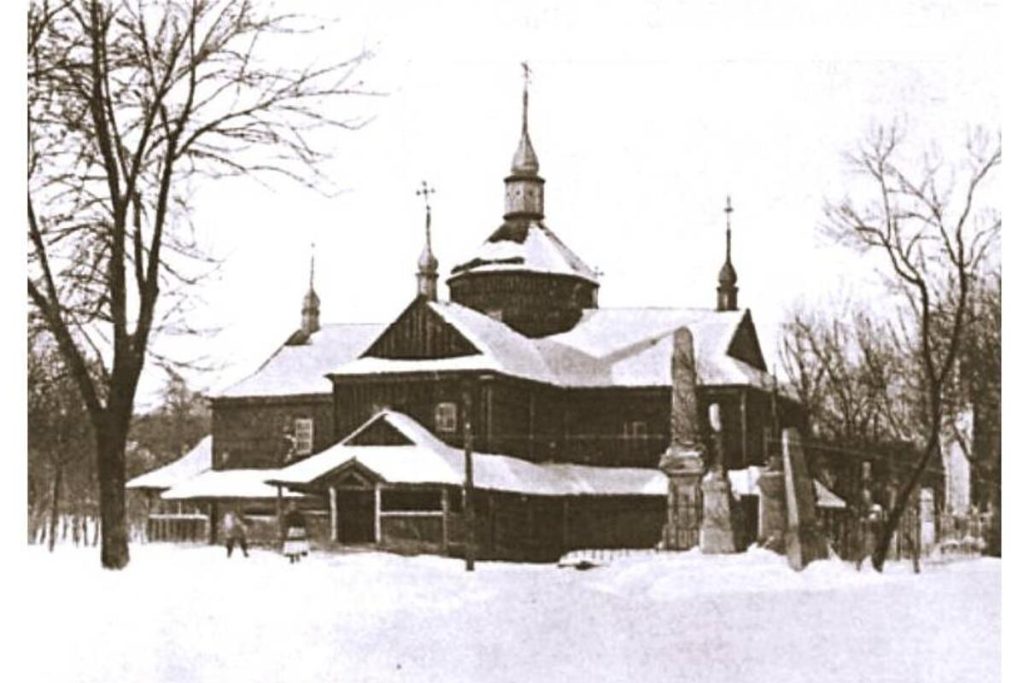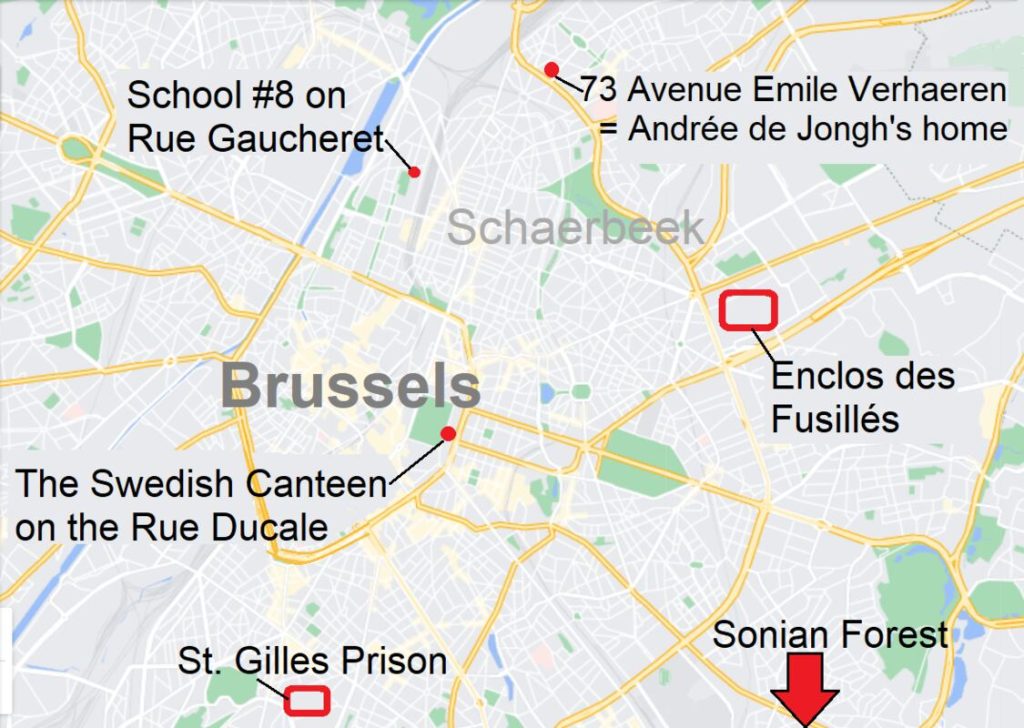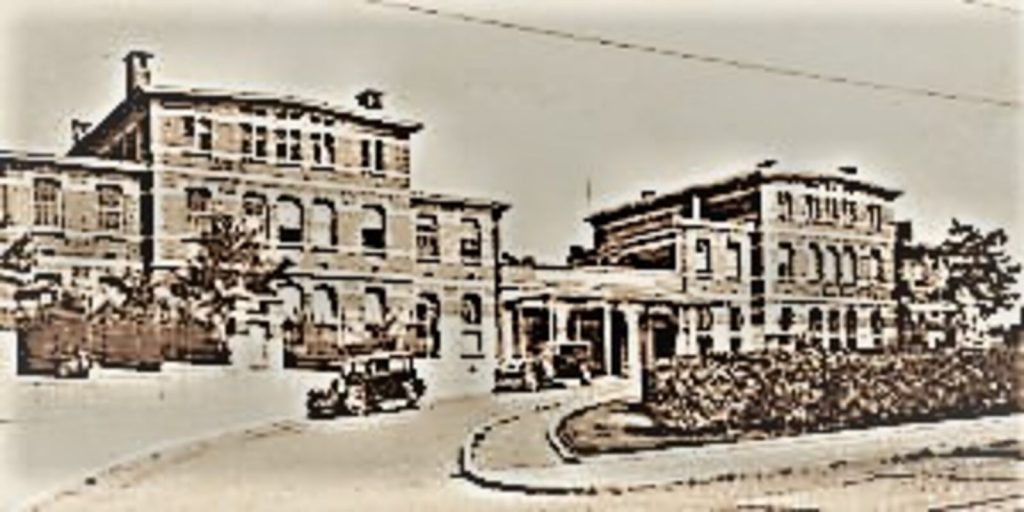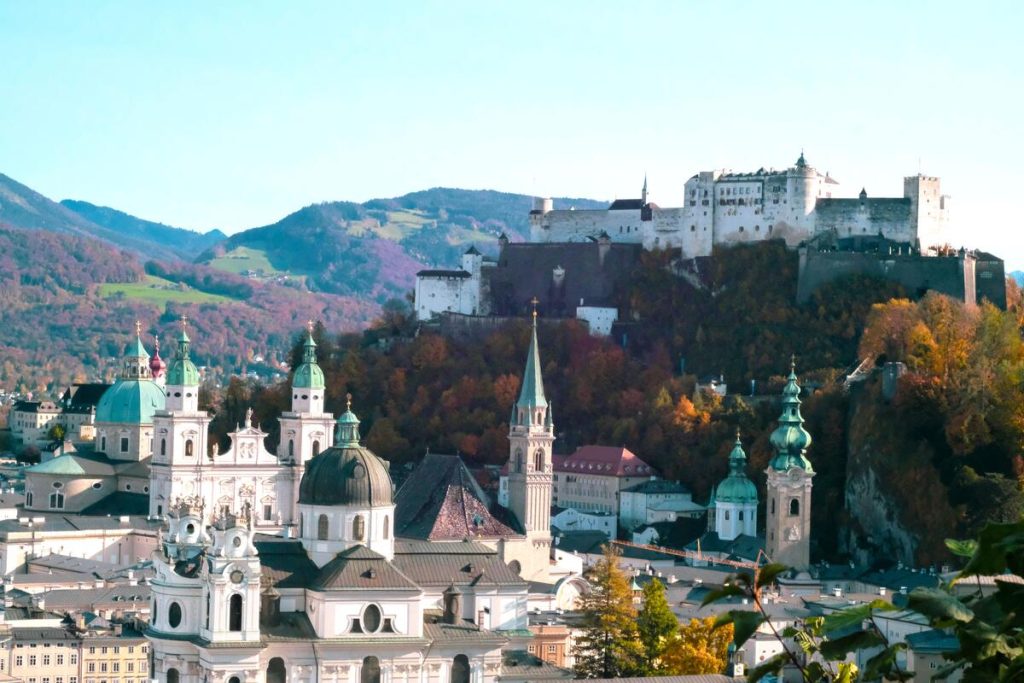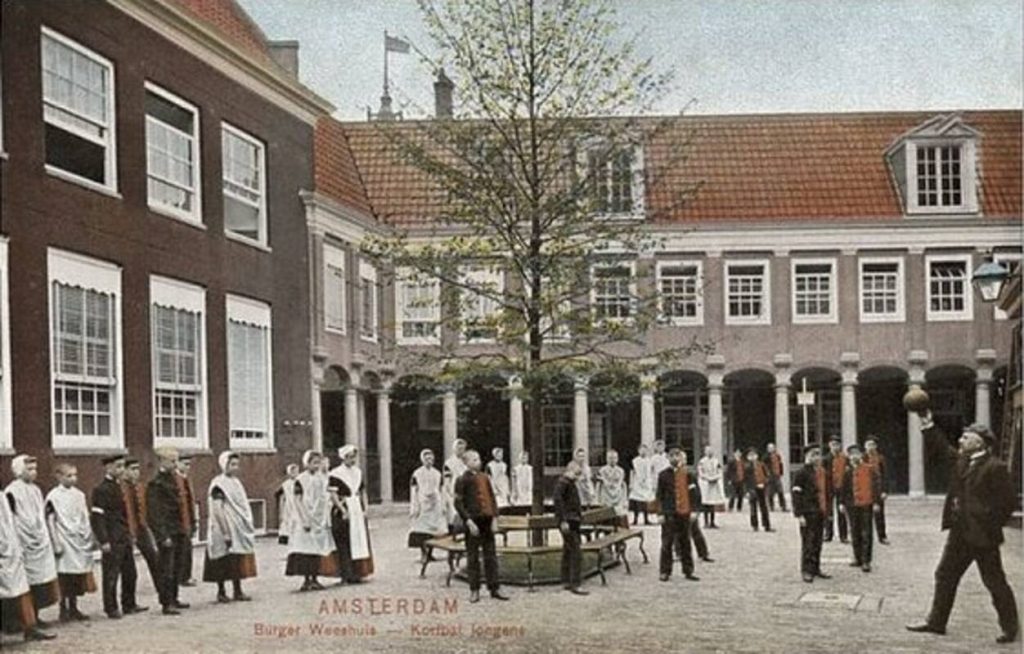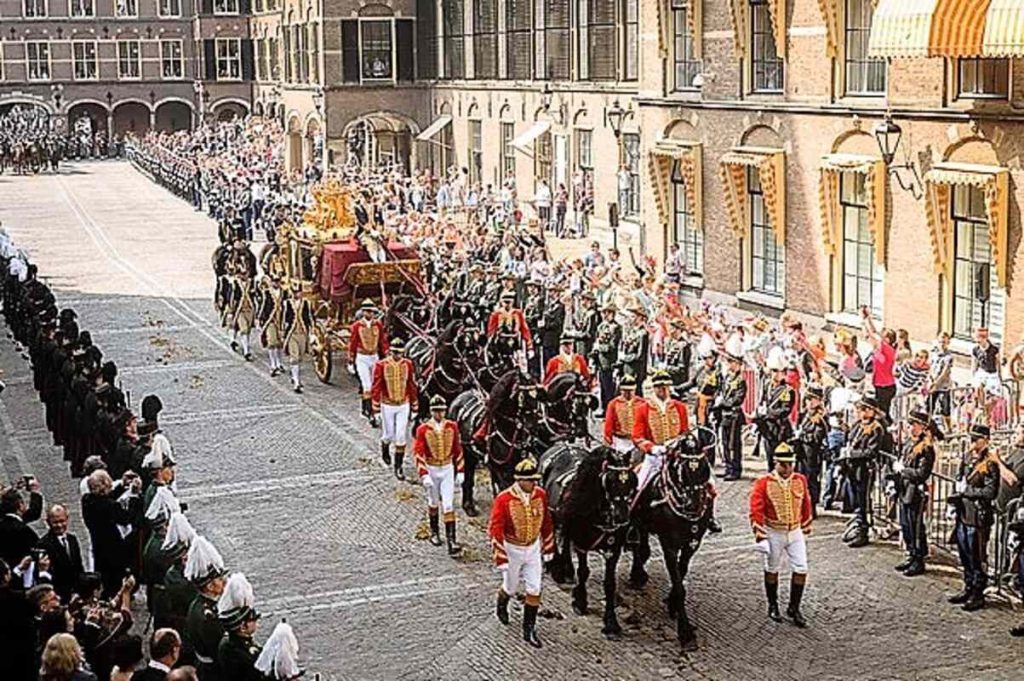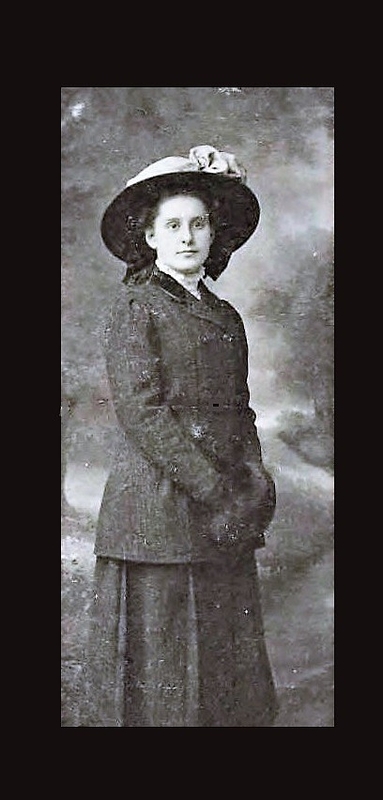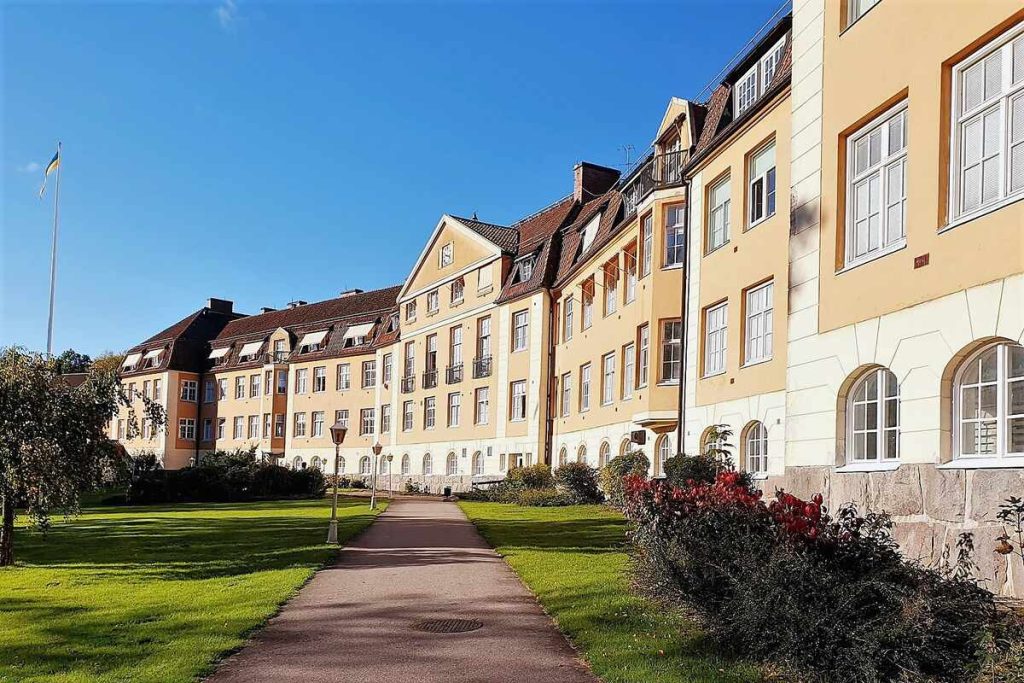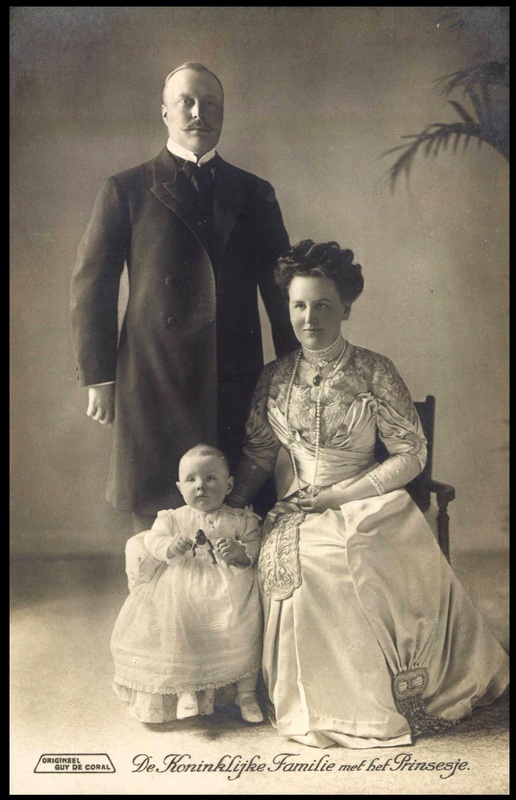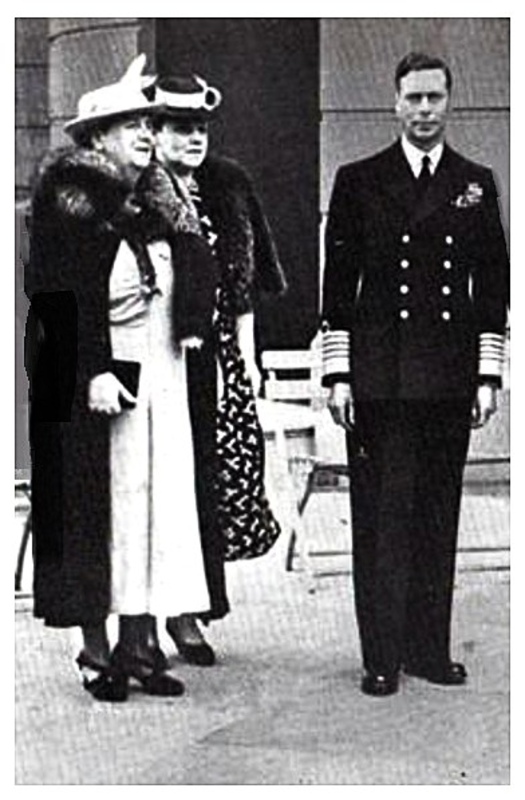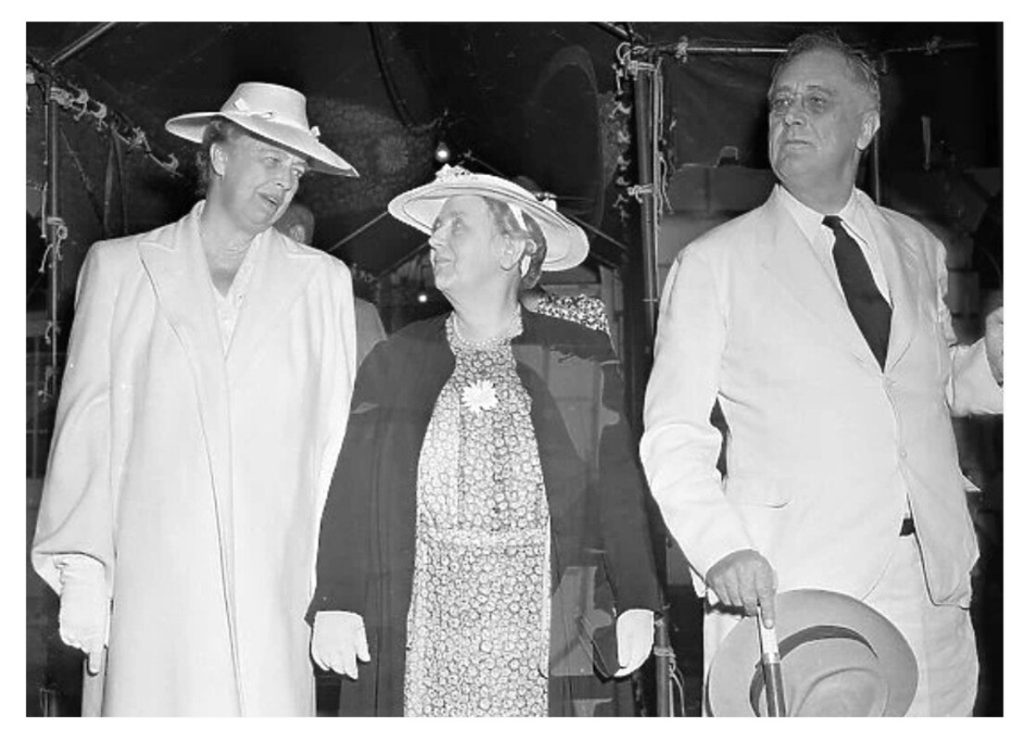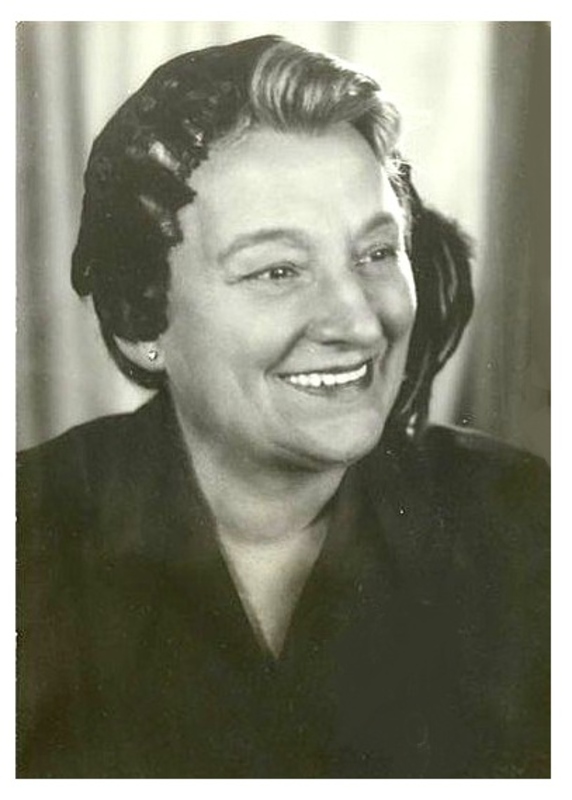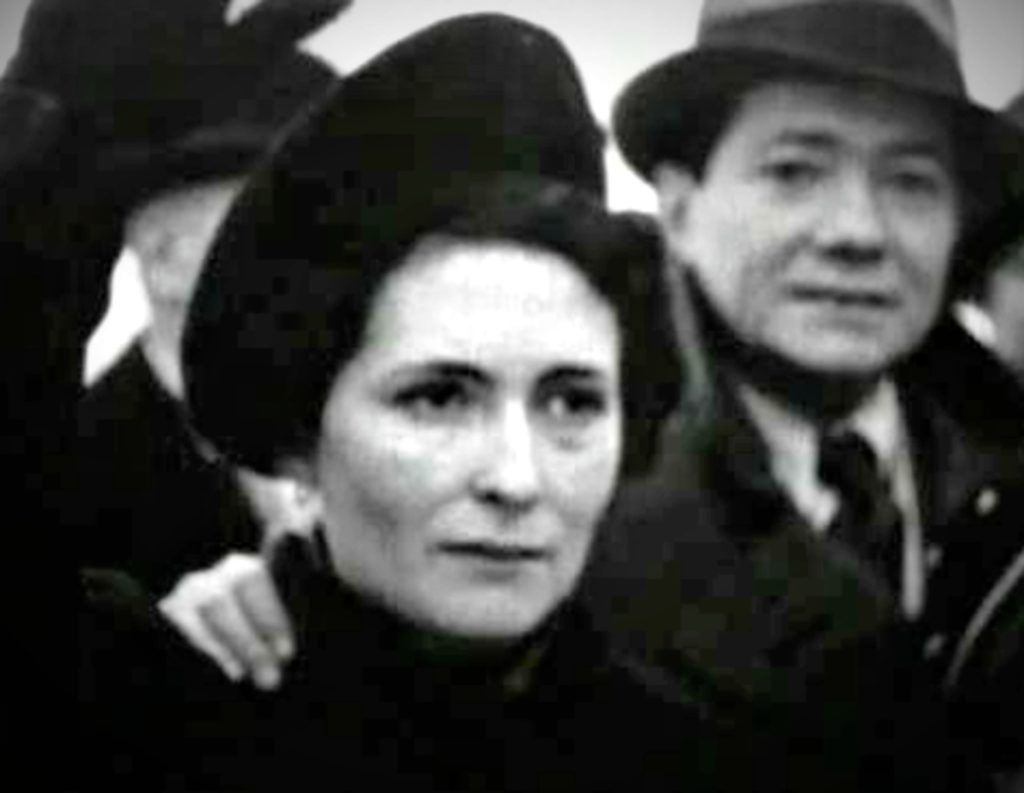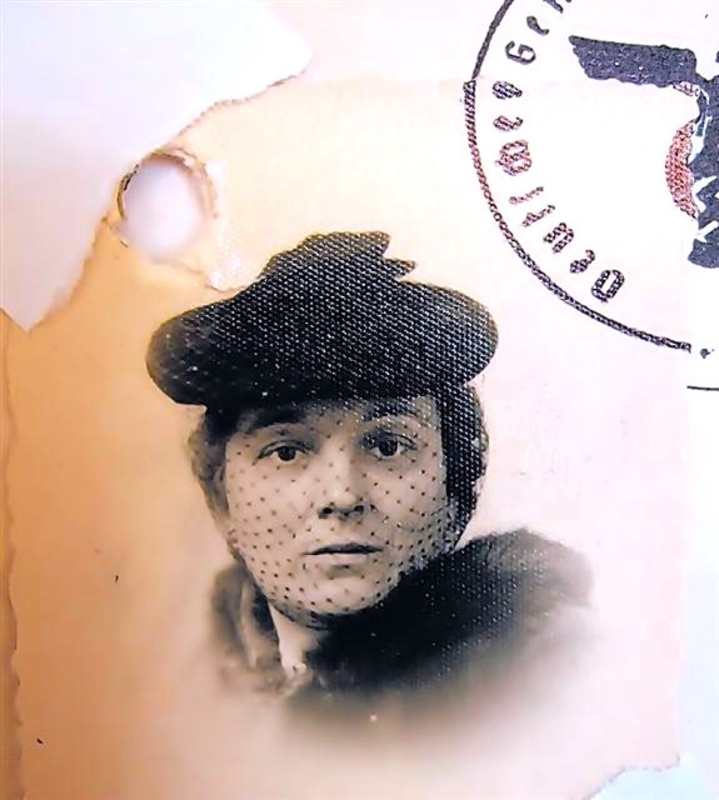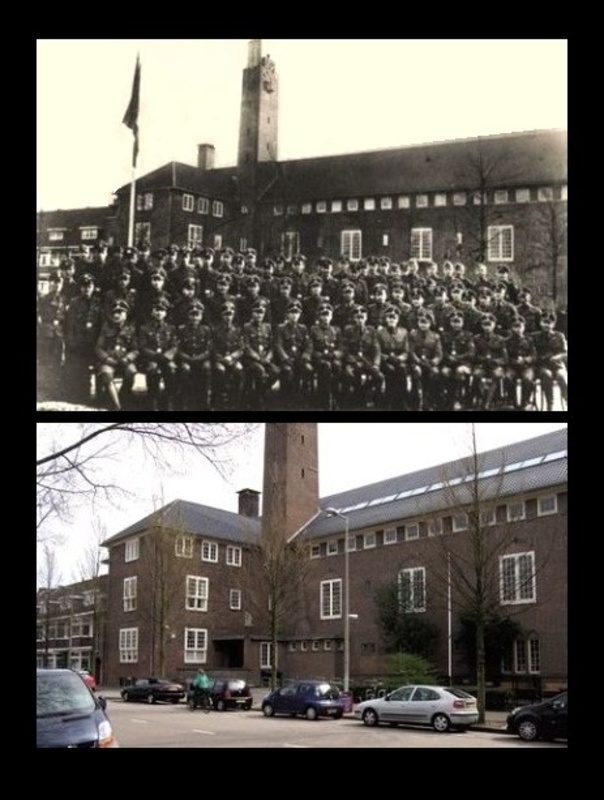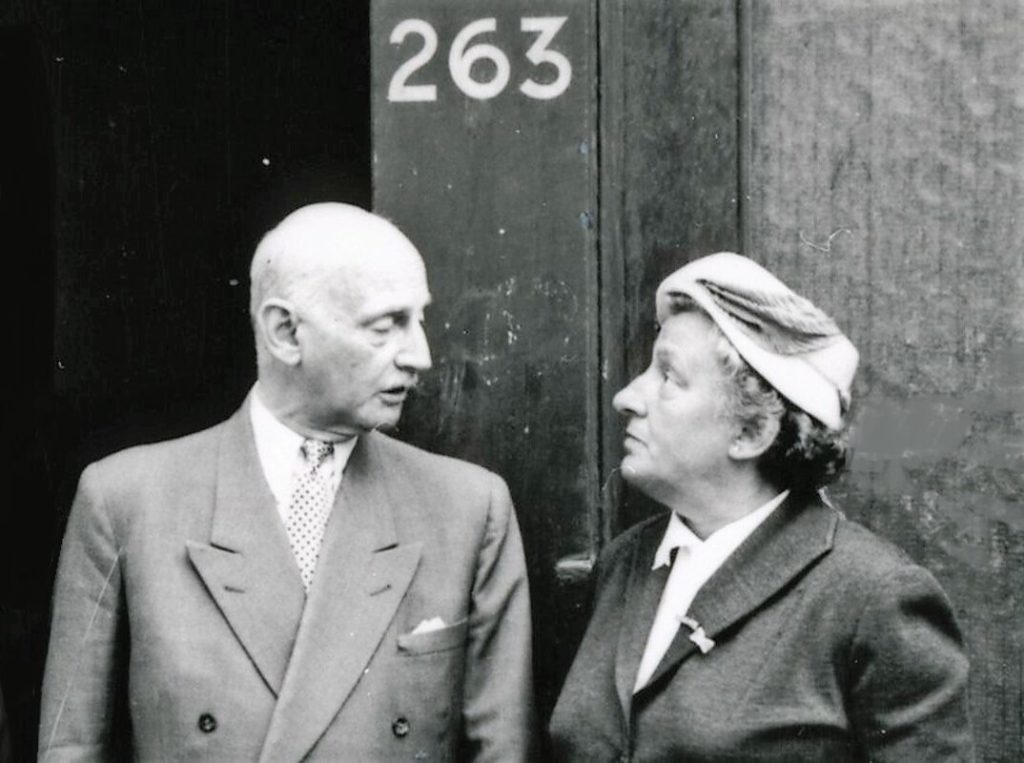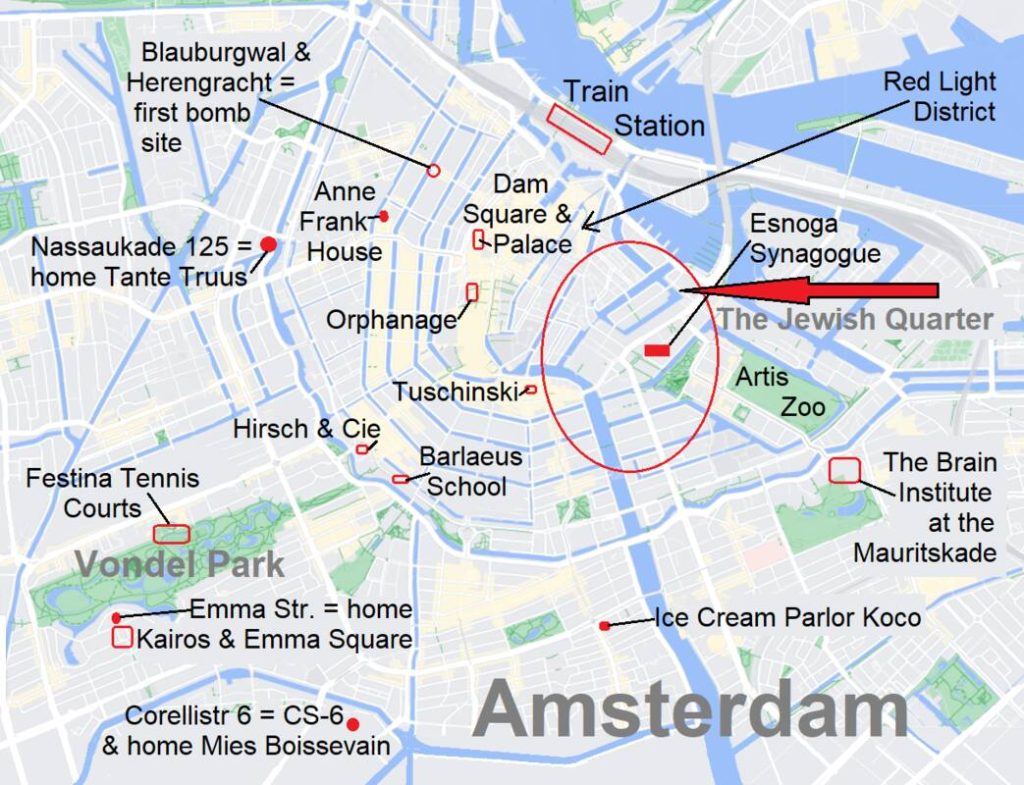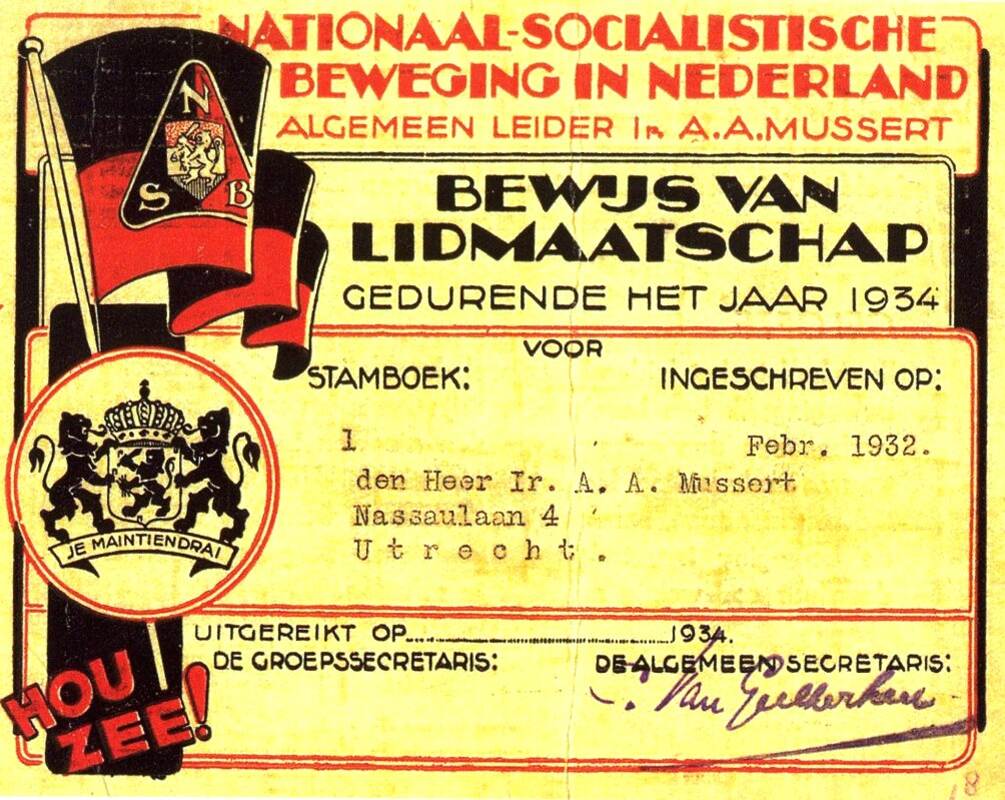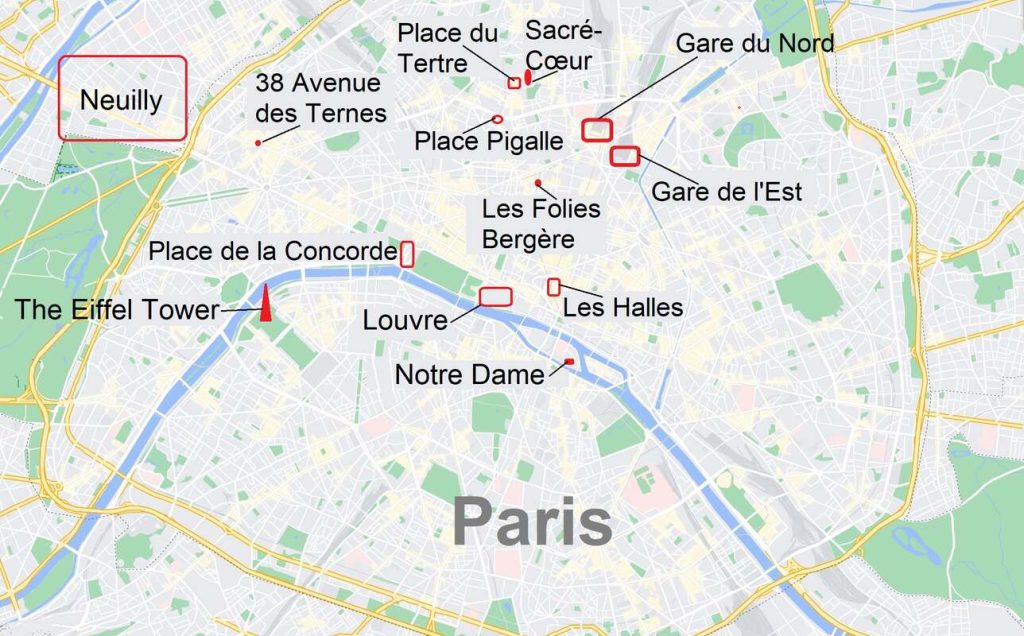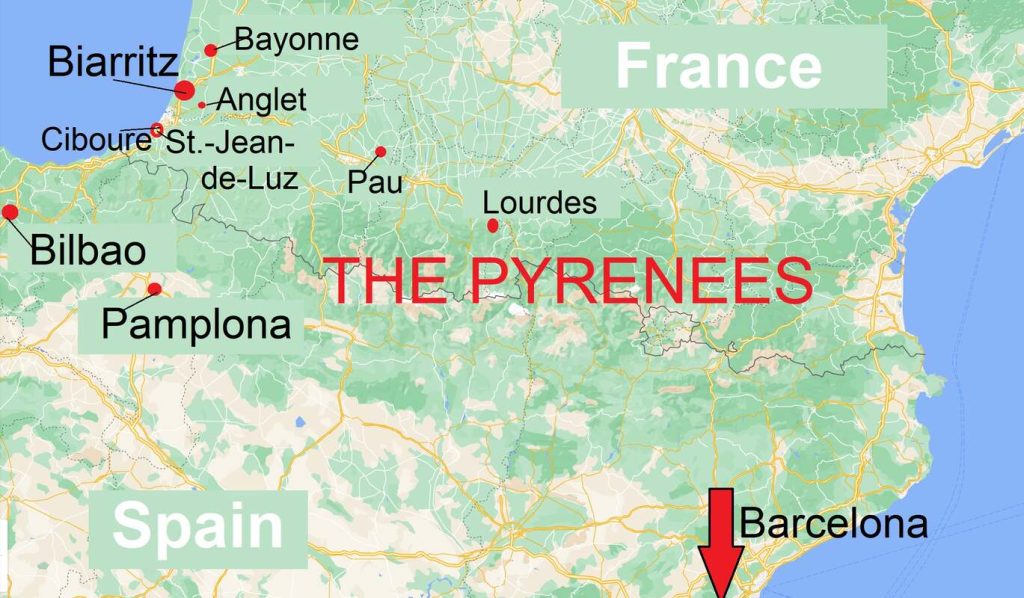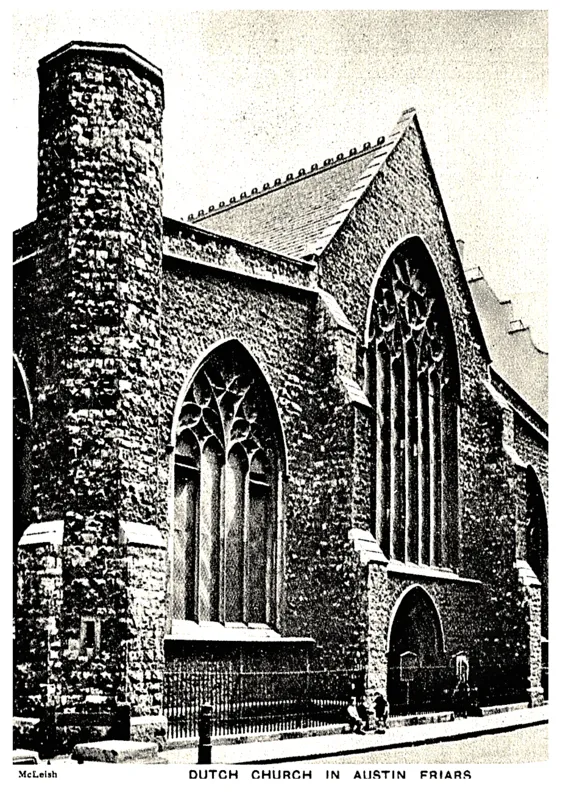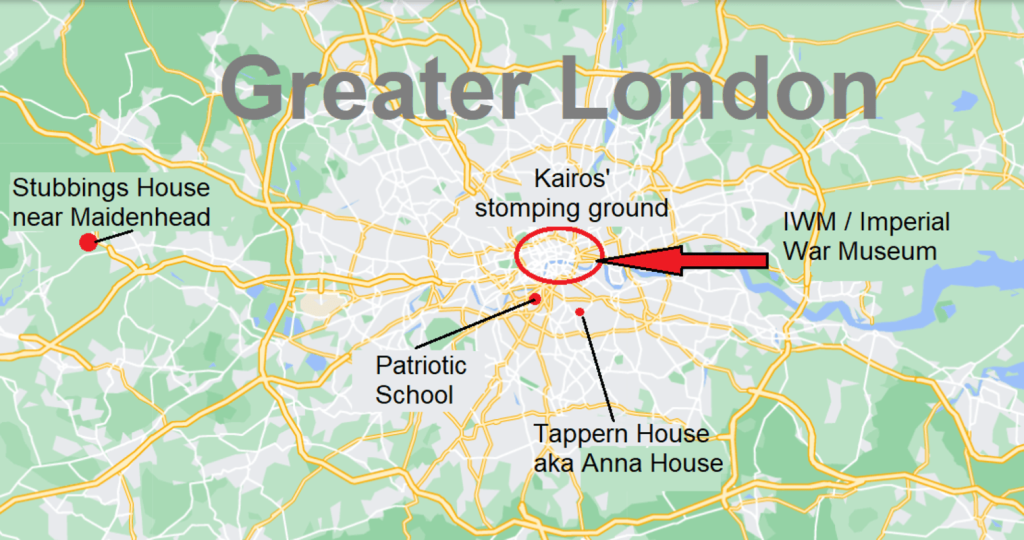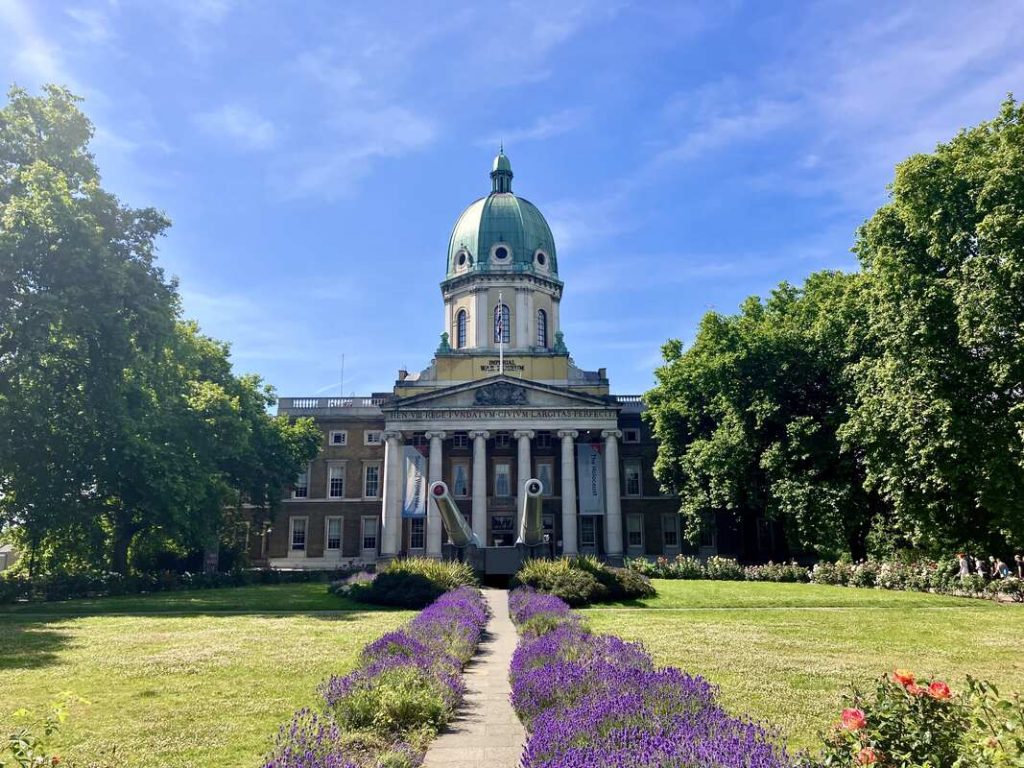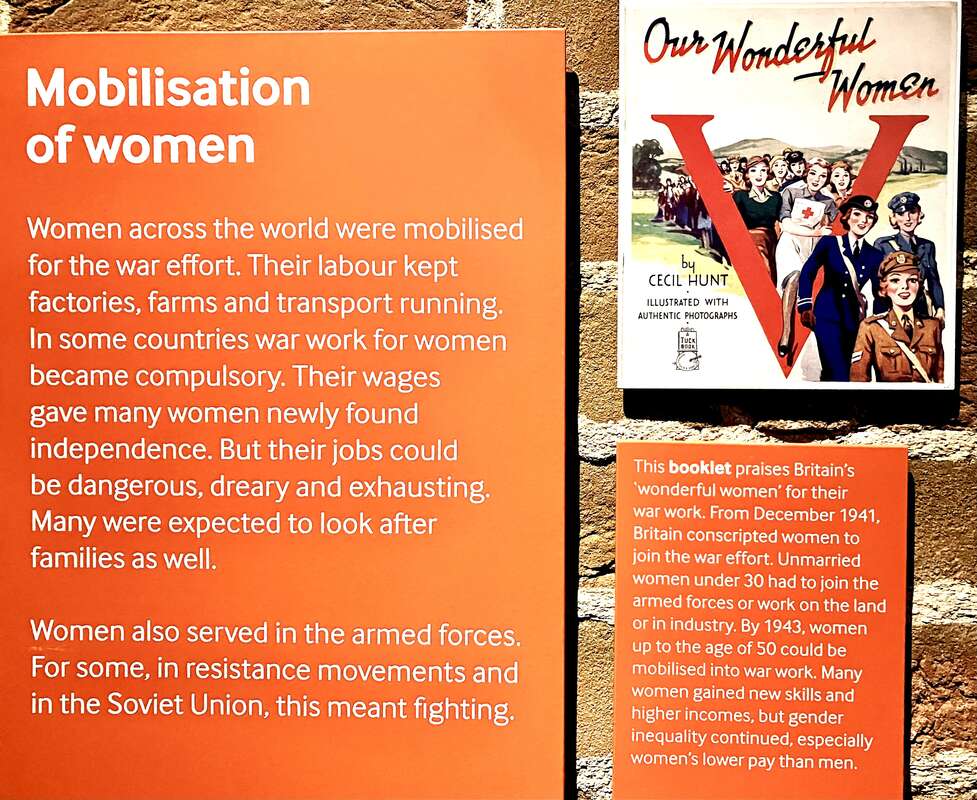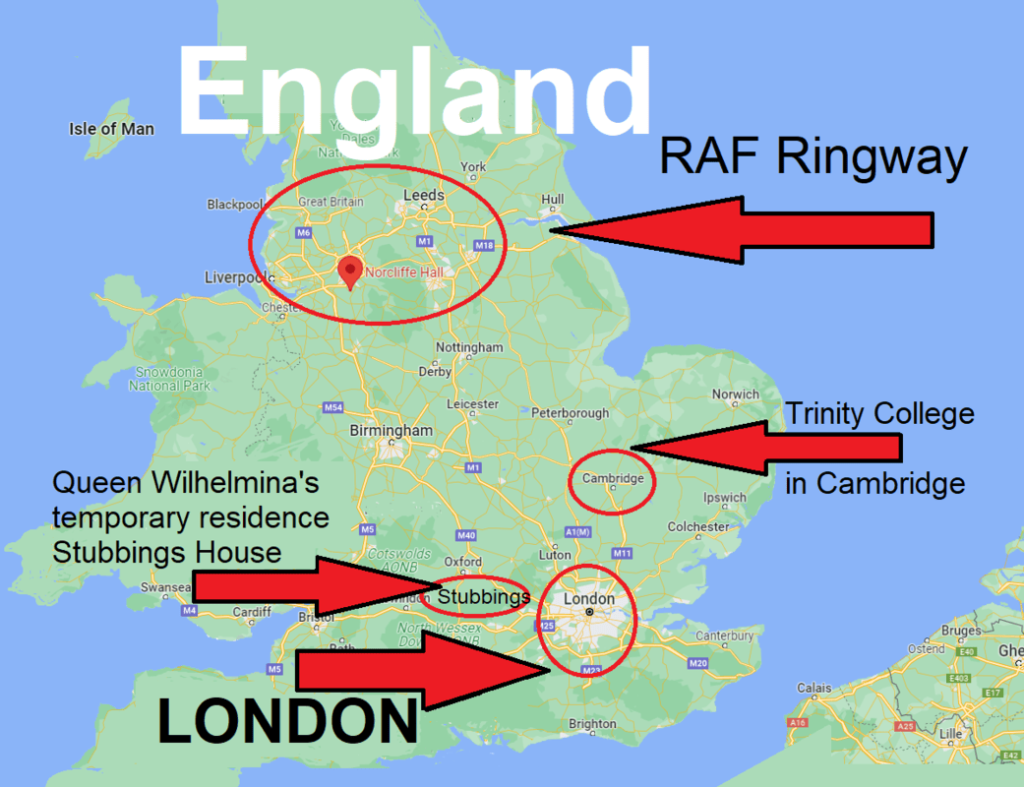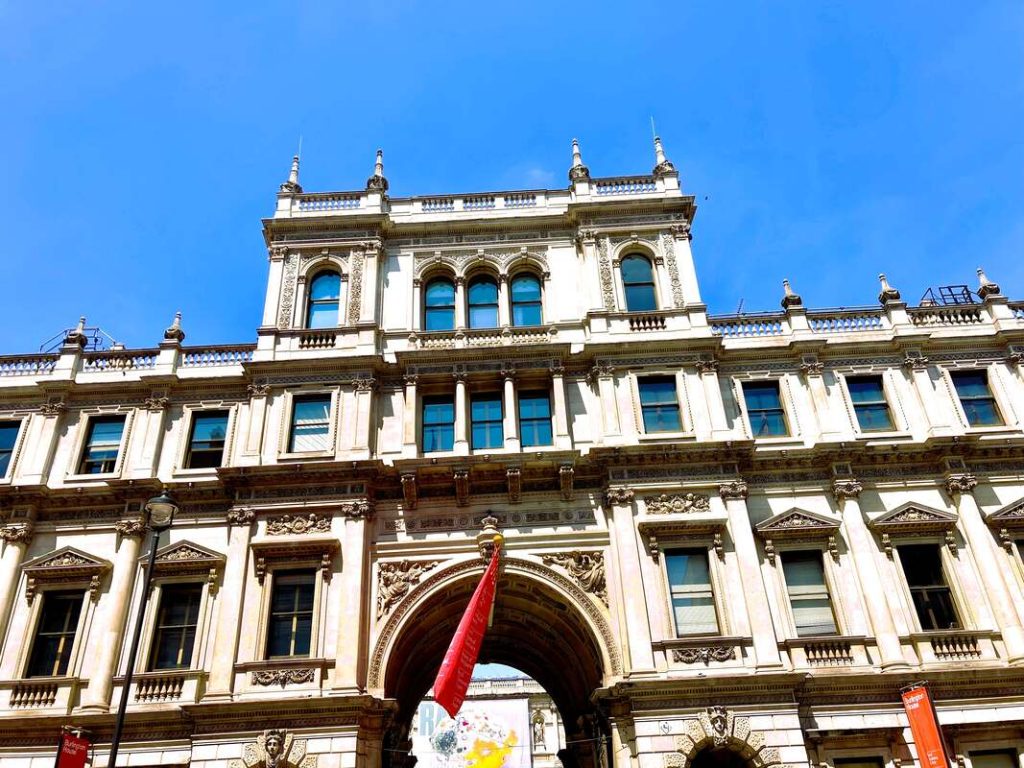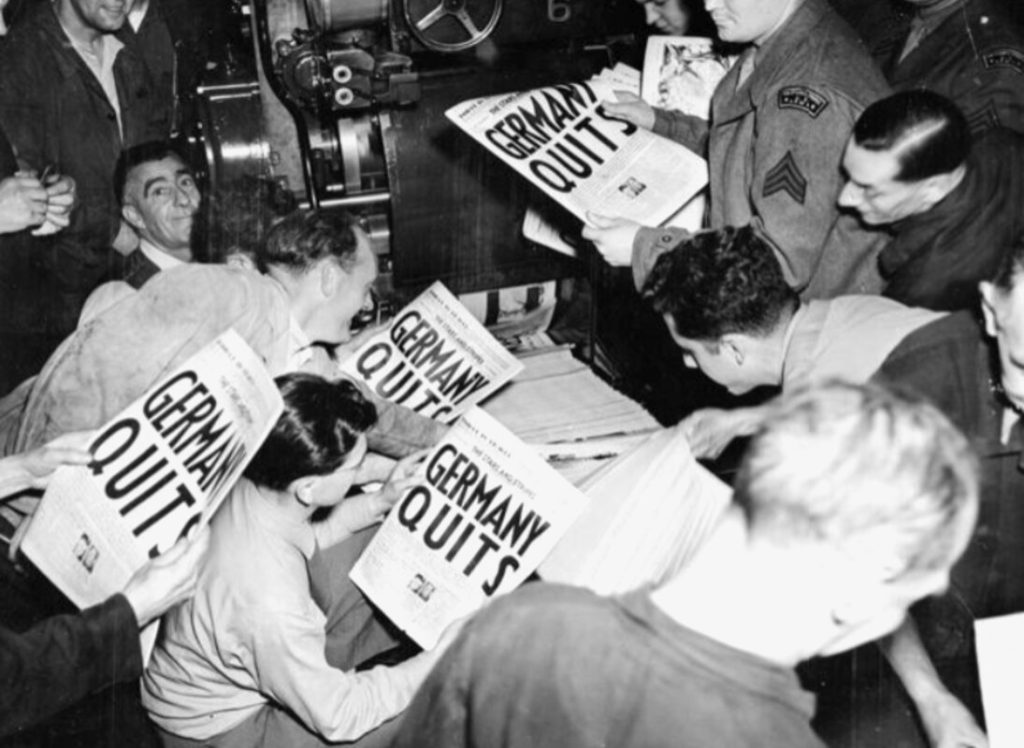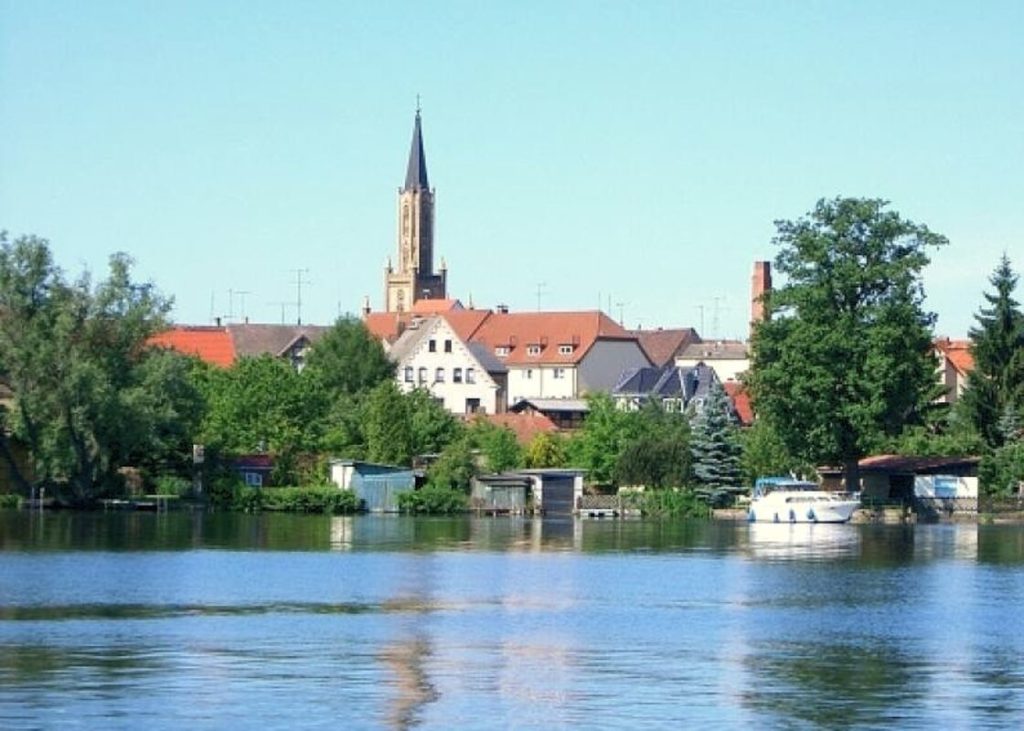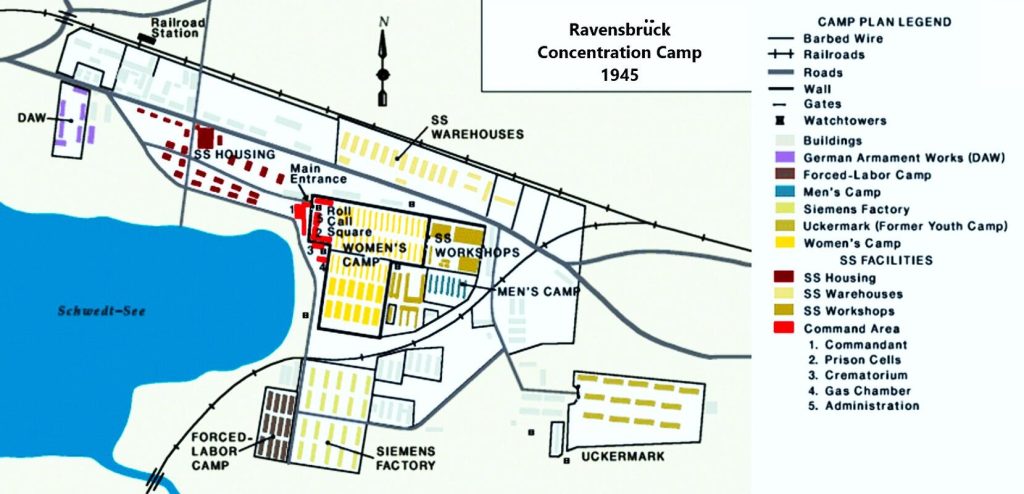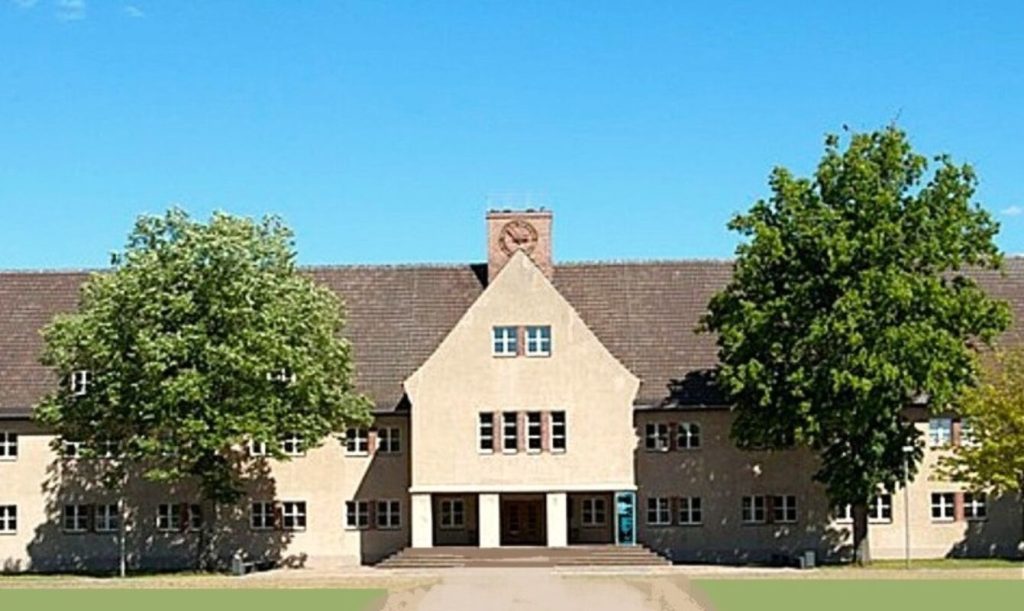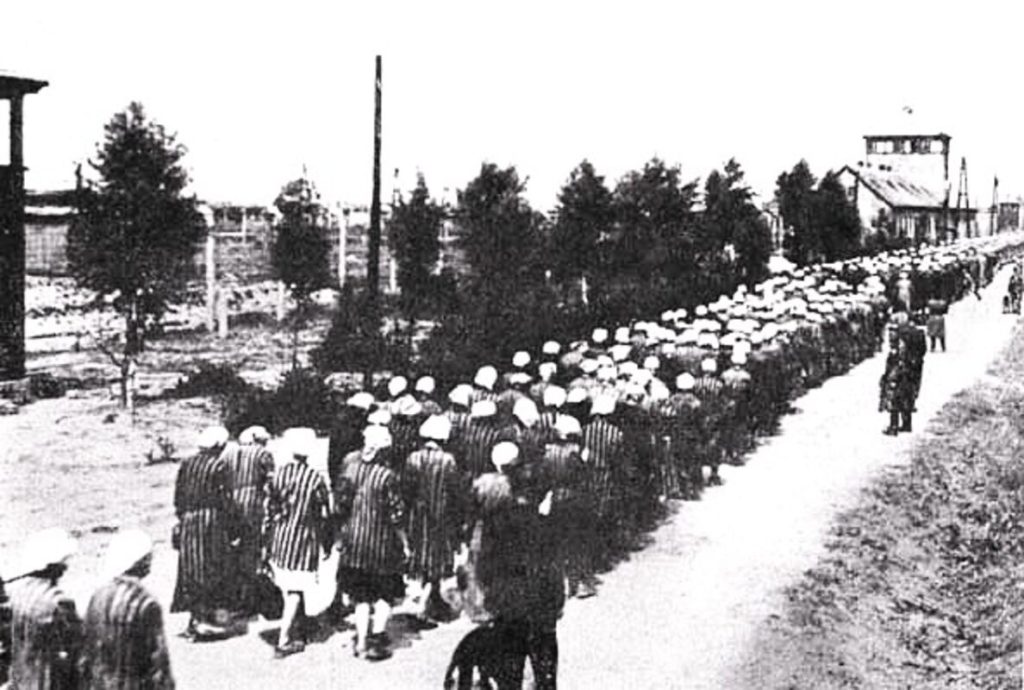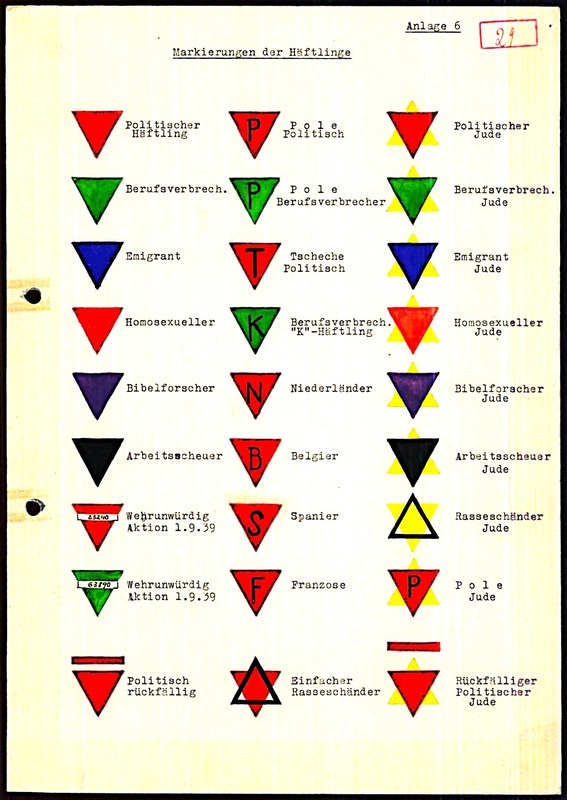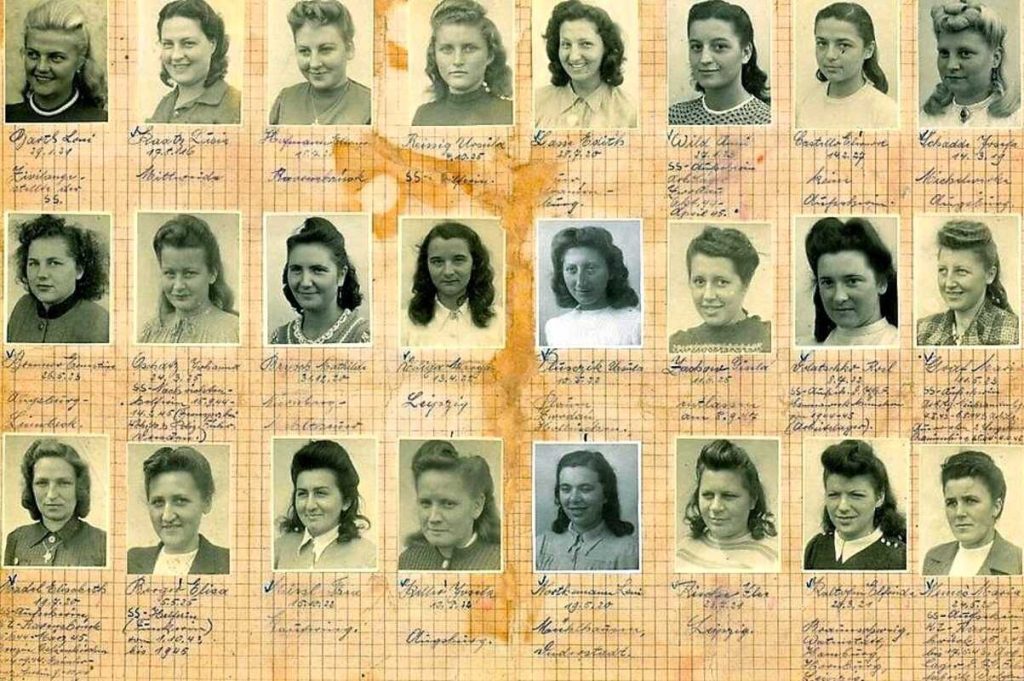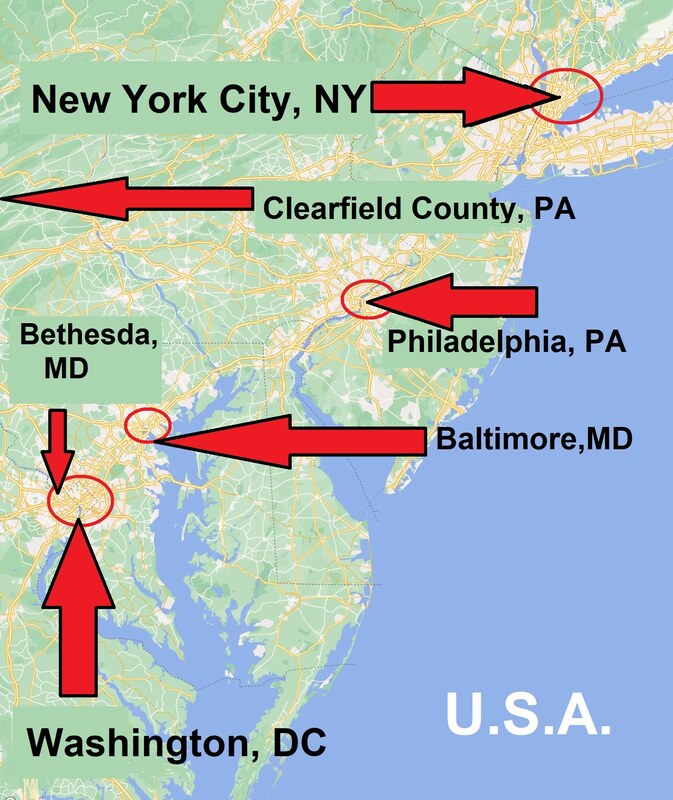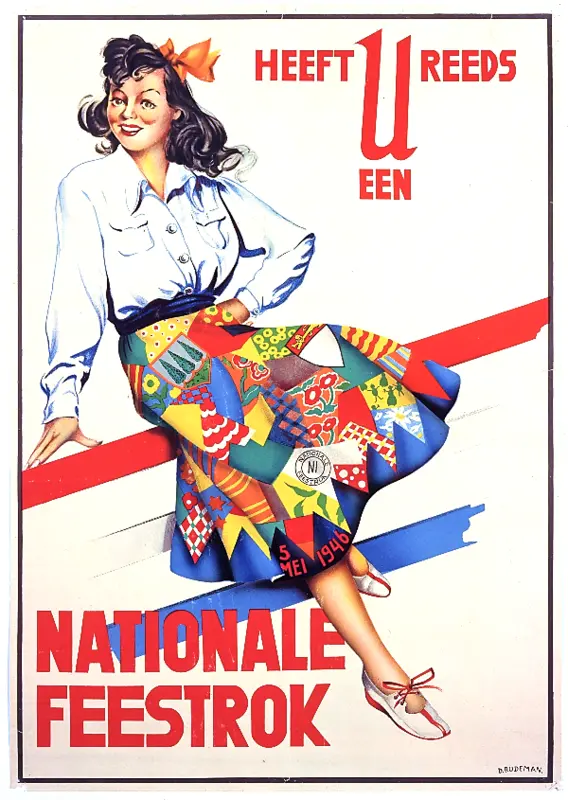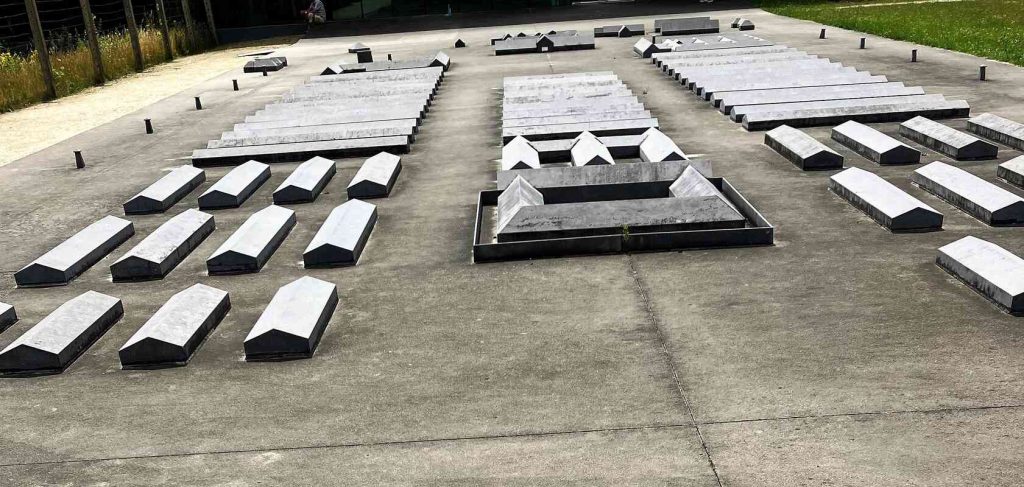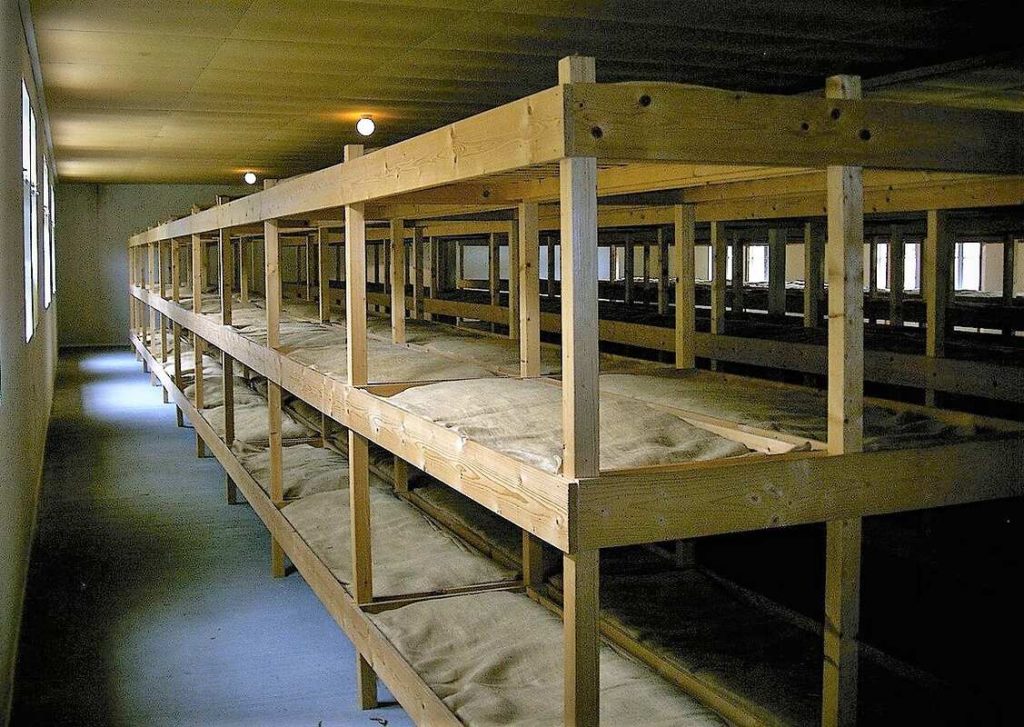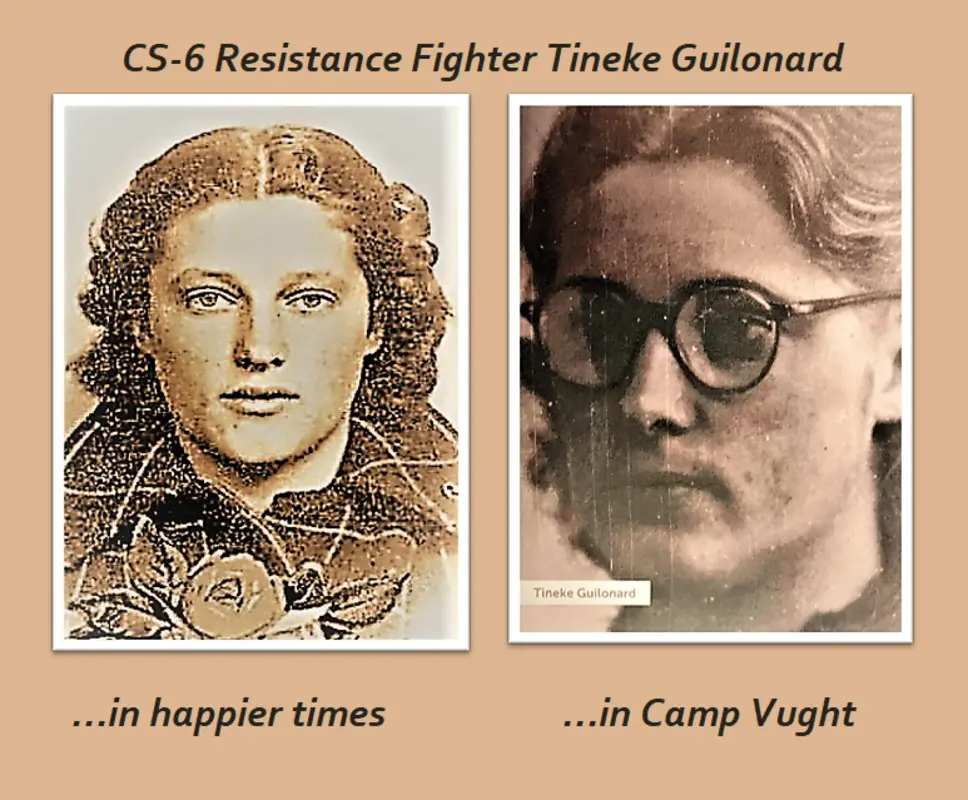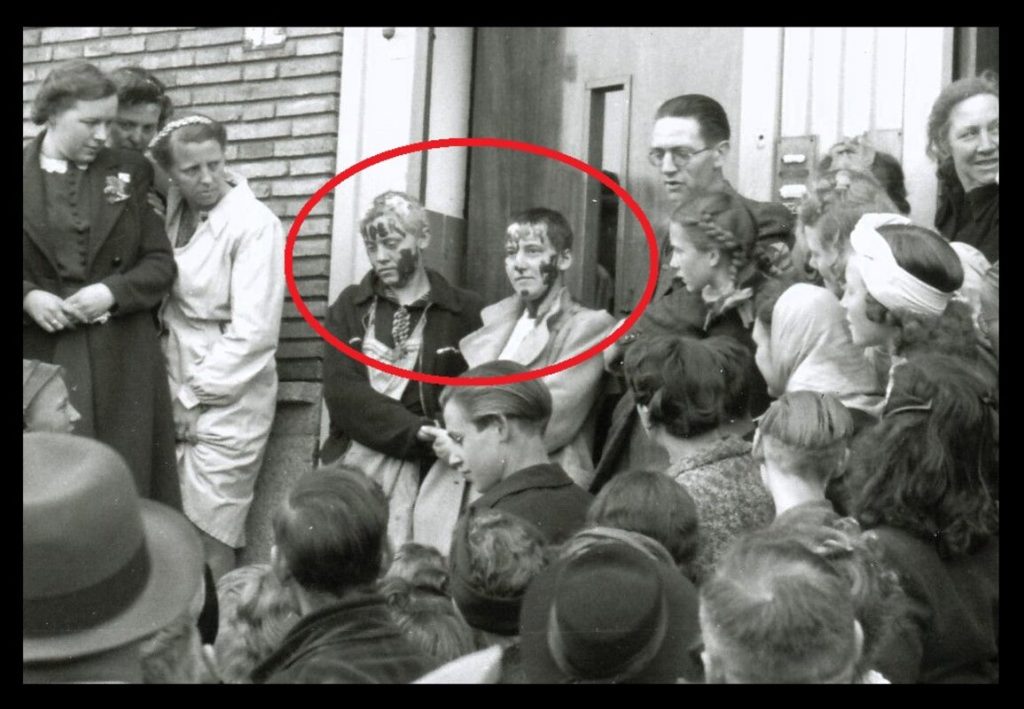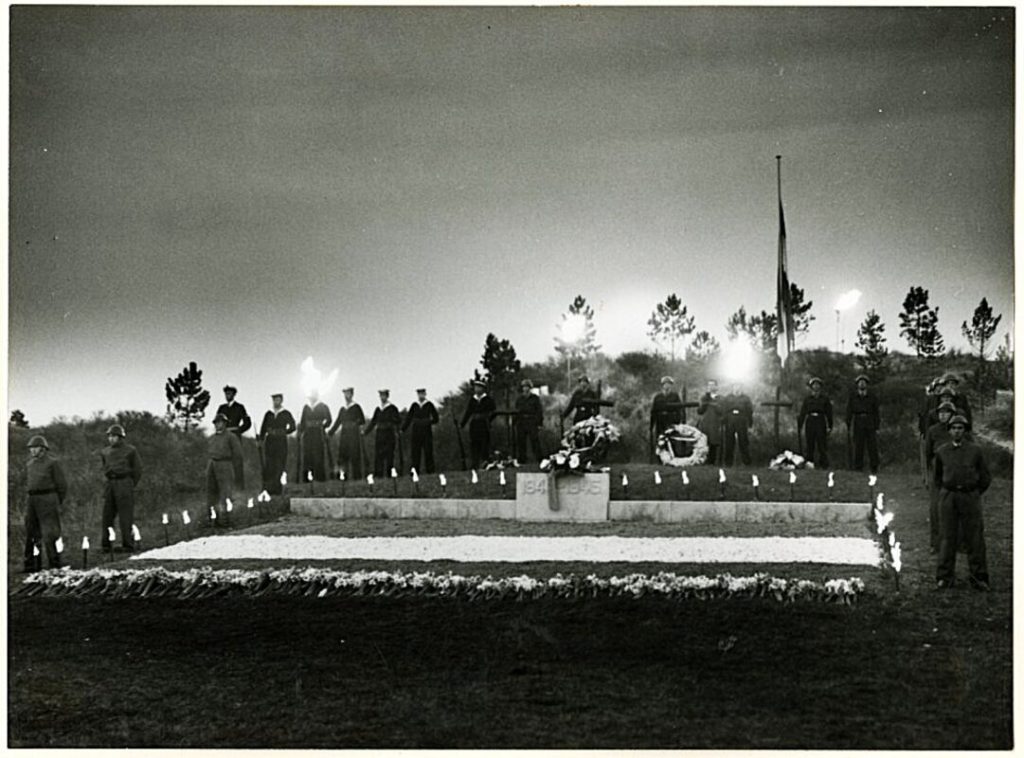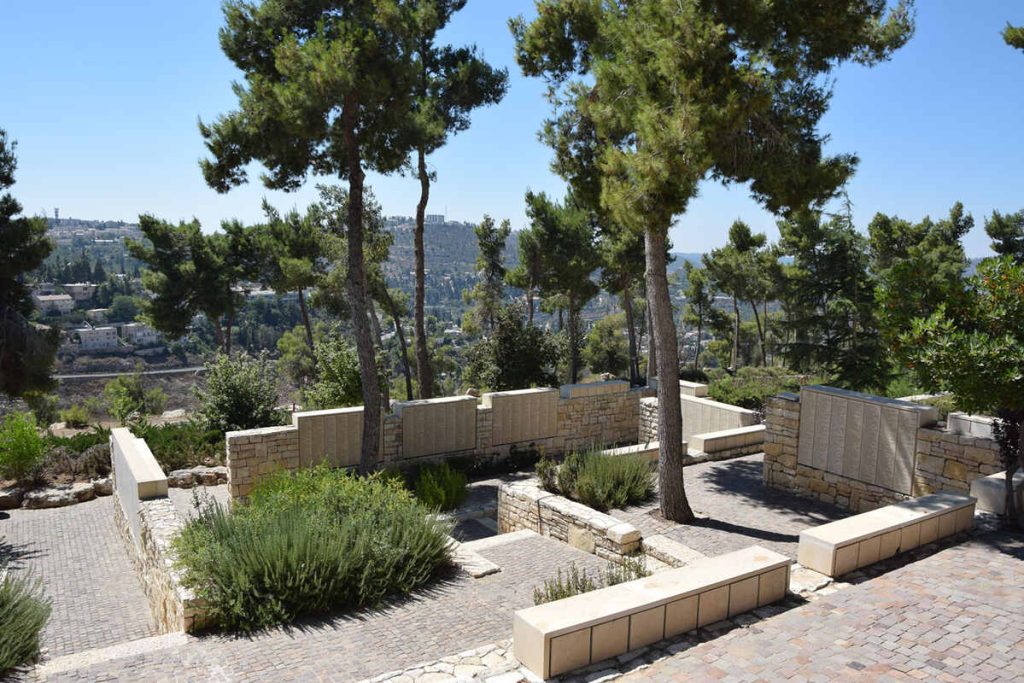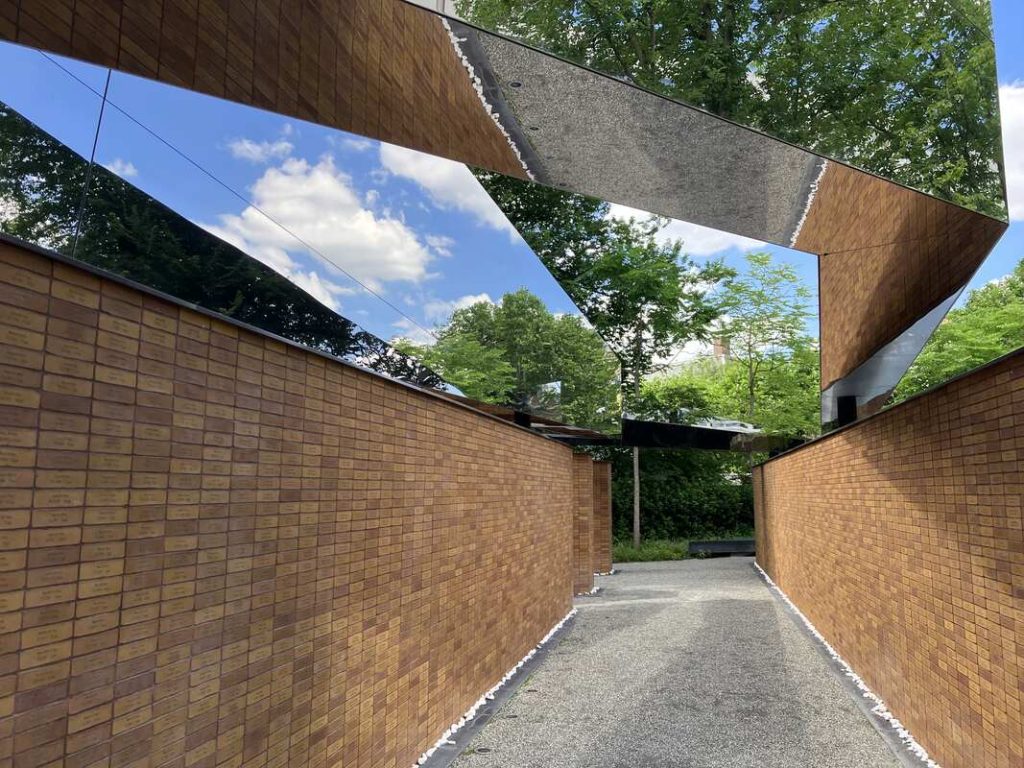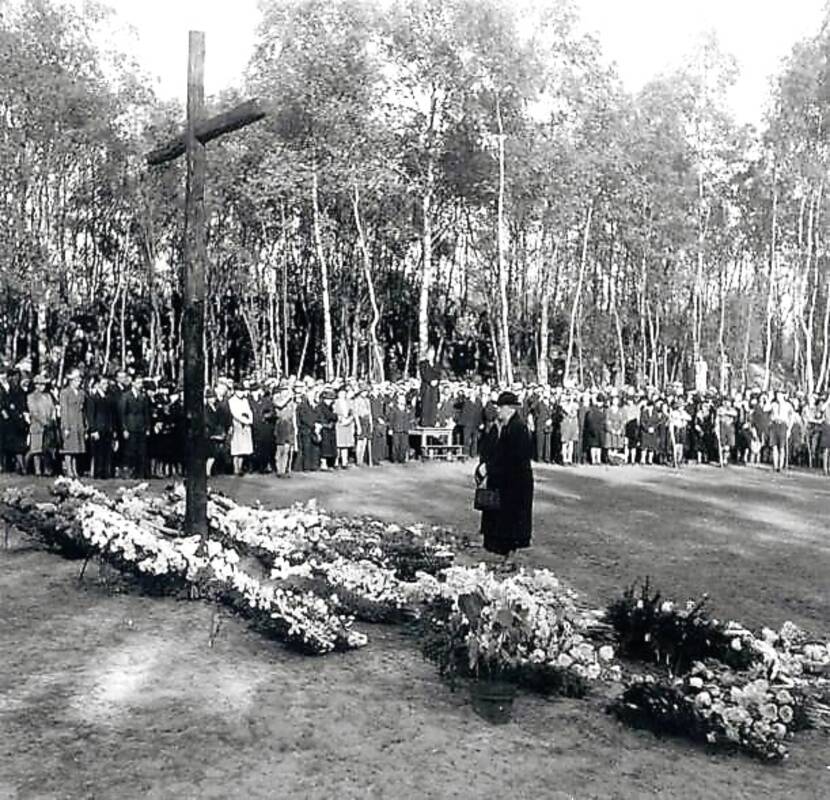AMSTERDAM – Jewish Amsterdam
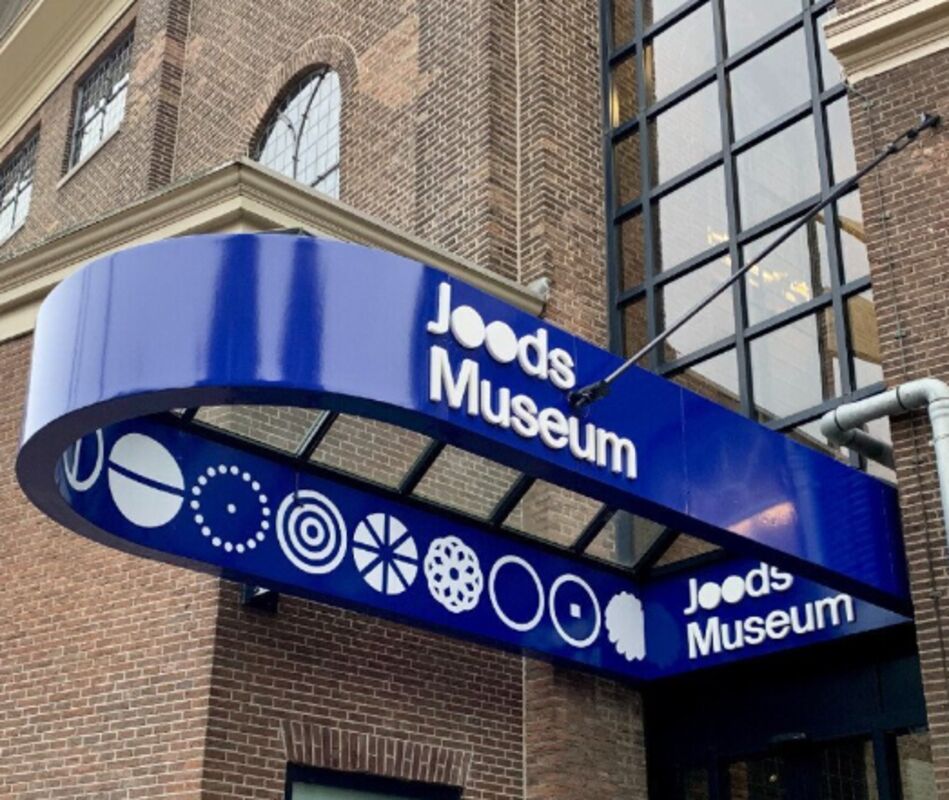
Picture credit: Jorinde
Personally, I believe Gaza should not be claimed by Israel, and so do many American-and Dutch-Jewish friends. Sadly, they are still targeted; hence, the enhanced security and sluice-like gate to enter the Jewish Museum.
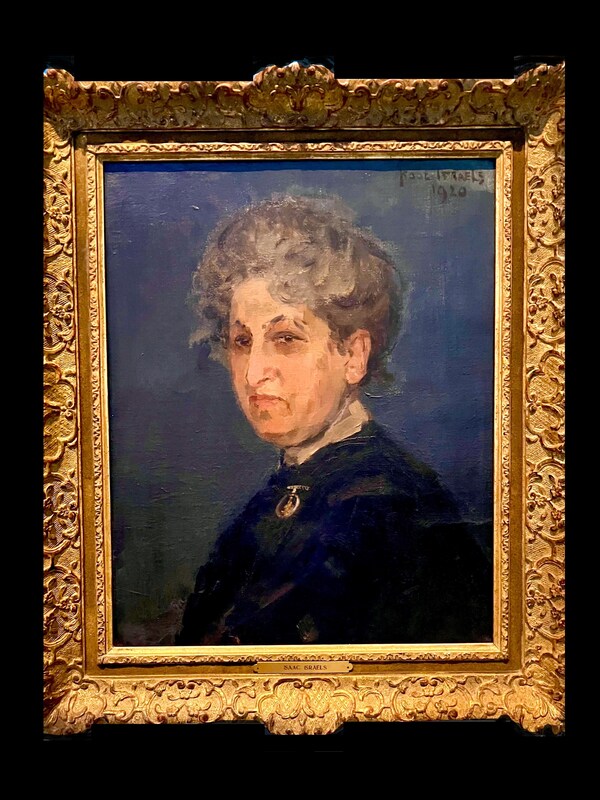
Painting by Isaac Israels
-Picture credits: Jorinde @ the Jewish Museum Amsterdam

Painting by Isaac Israels
– Picture credit: Jorinde @ Jewish Museum Amsterdam
The Jewish Sylvain Kahn and Sal Berg obtained a loan from Leo Hirsch to start a French fashion clothing store branch in Amsterdam. With the patronage of the Royal House and the Amsterdam elite, Hirsch & Cie became so successful that by 1912, the fashion house could move into the imposing building in Leidse Square, where the festive opening was celebrated with the first ever Dutch fashion show; twenty models from Paris showed off the latest fashion from France, Belgium, and Germany.
At the end of 1941 due to the war, Kahn and Berg had to go into hiding, and by July 1943, the Nazis requisitioned the building. While Kahn and Berg survived the war, many of their Jewish, French-speaking staff did not. After the war, as Amsterdam had to rise from the ashes and society had become more egalitarian, there was less of a need for high fashion, and eventually, Hirsch & Cie went out of business. As a sign of the times, the old Hirsch & Cie building currently houses Apple…
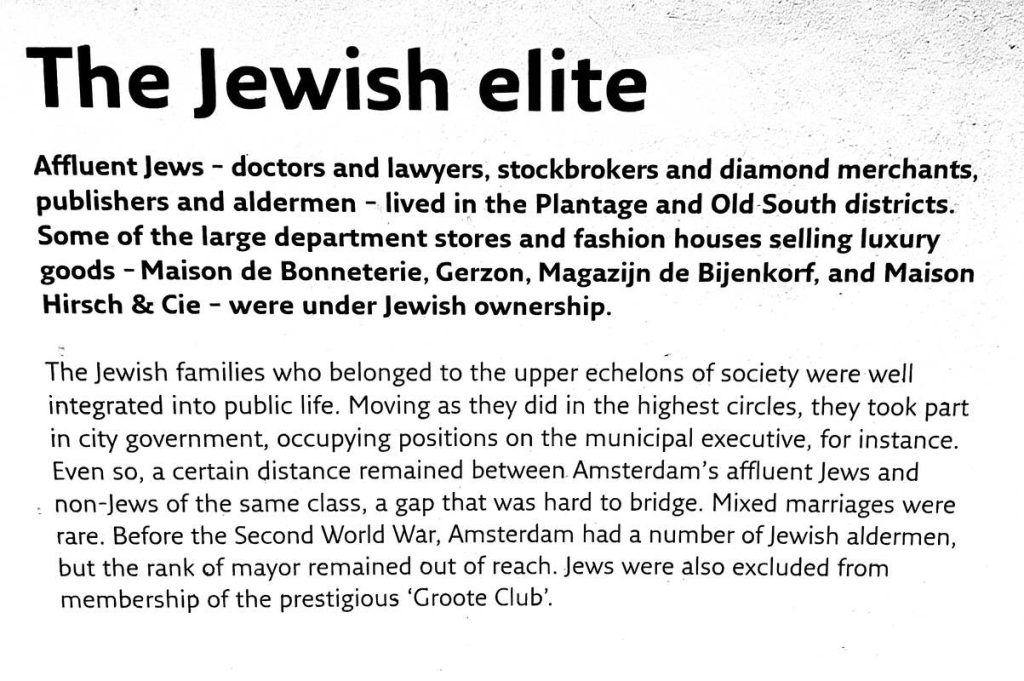
Picture credit: Jorinde @ Jewish Museum Amsterdam
Like Mies Boissevain remarked in the 1930s, the Keizersgracht (or “Emperor’s Canal)”was one of the areas where the rich elite lived. Many residents were Jewish: https://www.joodsamsterdam.nl/keizersgracht/

Picture credit: Jorinde @ Jewish Museum Amsterdam
In the past, the Sephardic Jews who had come to escape the Inquisition in Spain and Portugal, were often upper-class Jewish citizens, and the Yiddish-speaking Ashkenazi Jews escaping the Pogroms in Eastern Europe were sometimes less well-off, although some hard-working, astute businessmen (like Abraham Tuschinski) proved that stereotype wrong.
Before the war, there was also a large segment of the Jewish population who were entertainers. In the red program for example, iconic Jewish singer and Vaudeville actor Louis Davids (whom Kairos’ mother adored) can be seen.
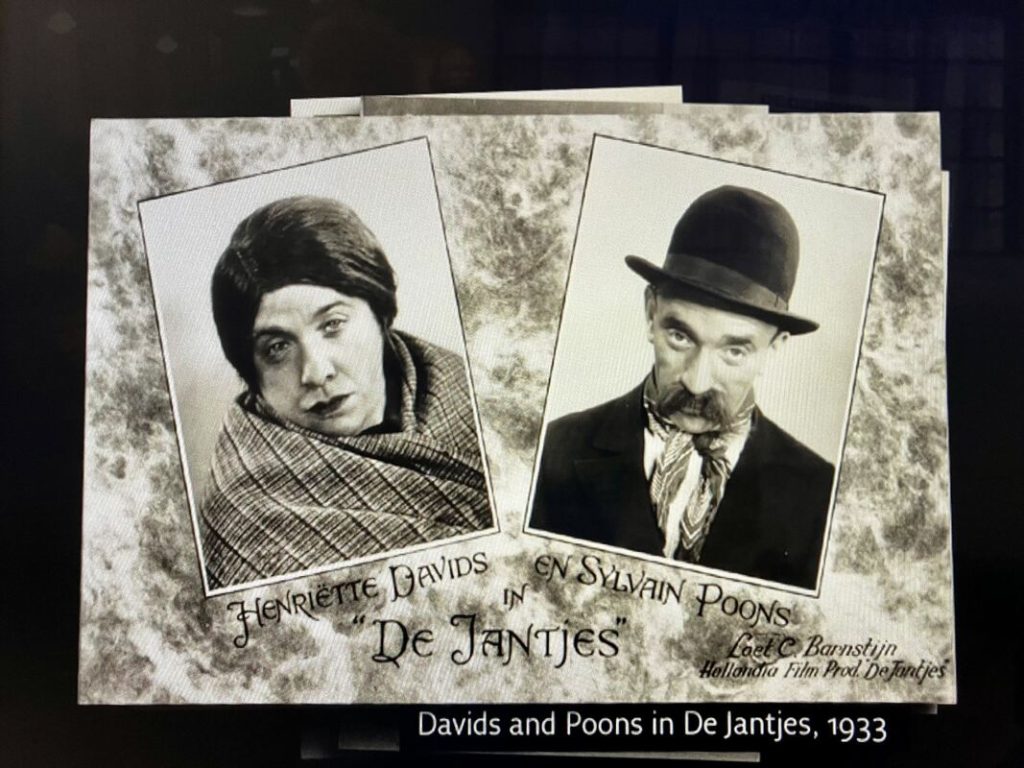
Picture credit: Jorinde @ Jewish Museum Amsterdam
In 1933, a “typically” Dutch musical movie called “de Jantjes” was wildly popular. The setting was Amsterdam, the target audience was the “common man,” the music was written by Louis Davids, and some main characters in the movie were played by Jewish actors as well.
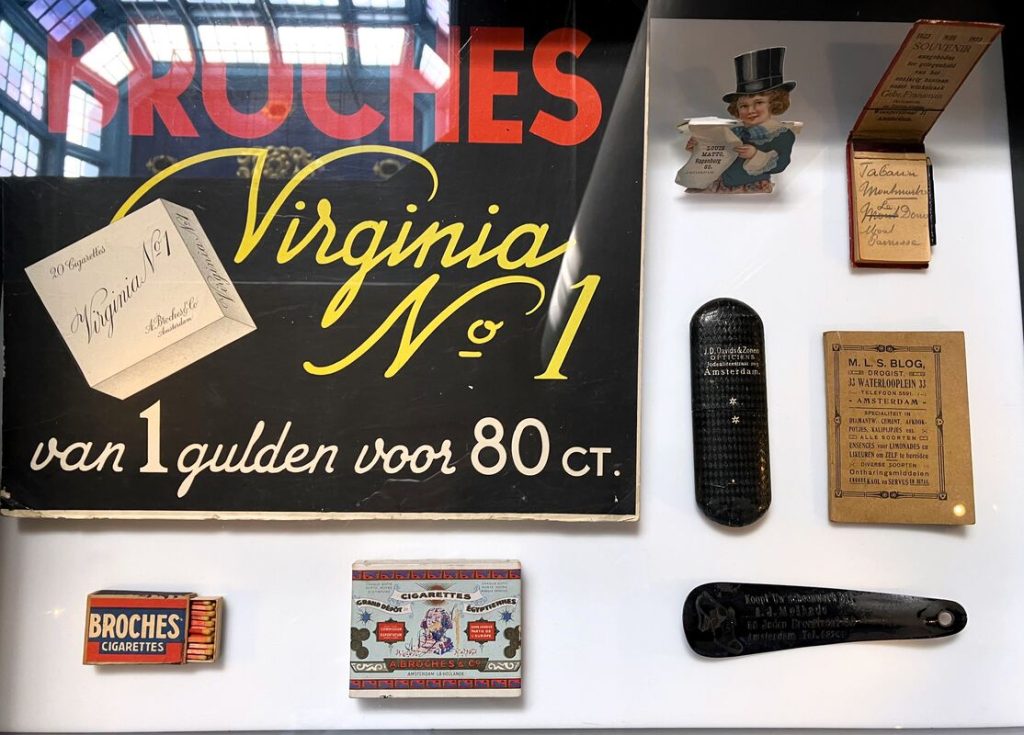
Picture credit: Jorinde @ Jewish Museum Amsterdam

Photographer unknown
Jewish merchants had their shops among others on the Jodenbree Street, in the poor Woodgardens area, and in stalls in markets like the Waterloo Square.
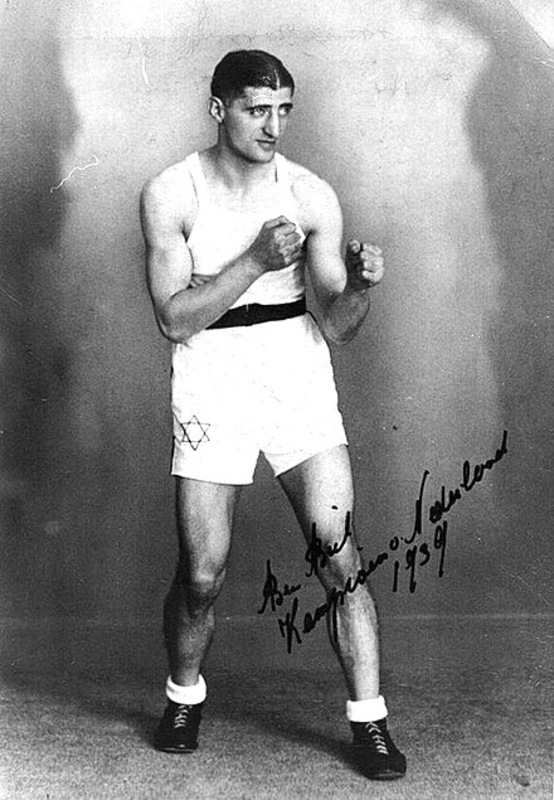
Unknown photographer
…And there were Jewish athletes, like legendary Amsterdam boxer Ben Bril; at the age of fifteen, he was the youngest to participate in the Olympic Games of 1928, and he was a twelve-time national champion in the 1920s and 1930s.
Starting out as a streetfighter from an impoverished background, he trained at the Olympia Boxing School in what used to be called the Jewish “Wood Gardens” neighborhood, where most young Jews organized Neighborhood Watches to defend Jewish citizens and businesses against the Dutch paramilitary pro-Nazi W.A. raids in the 1940s.
In 1942, a teammate from the boxing school betrayed where Ben Bril and his family were hiding. Via Camp Vught, they ended up in the Bergen-Belsen camp. Because of his boxing, Ben Bril, his wife, and son survived, but four of his siblings died in the camps. Ben Bril would die at the age of 91 at the Beth Shalom Retirement home in his hometown of Amsterdam. To this day, the Ben Bril Memorial Boxing Gala takes place every October in Amsterdam.
Fact or Fiction: Everything is factual, but Kairos did not know him personally.
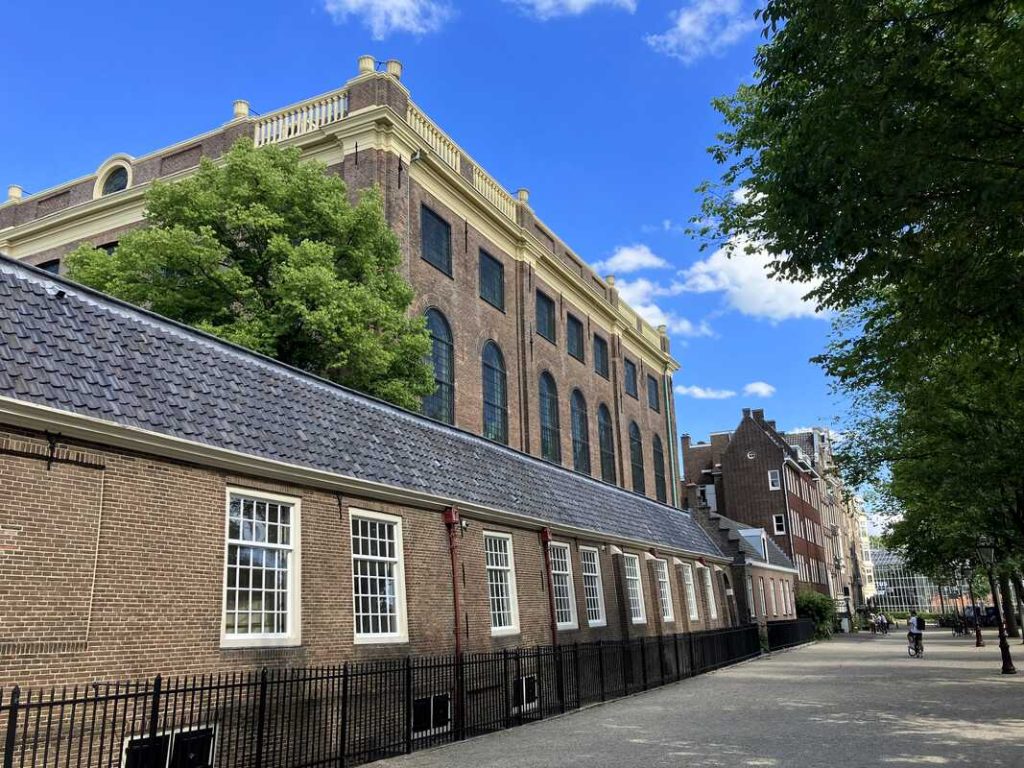
Picture credit: Jorinde
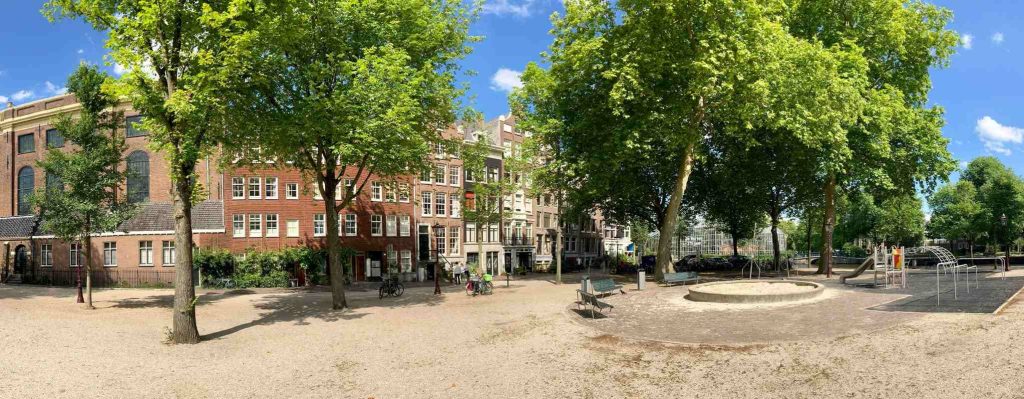
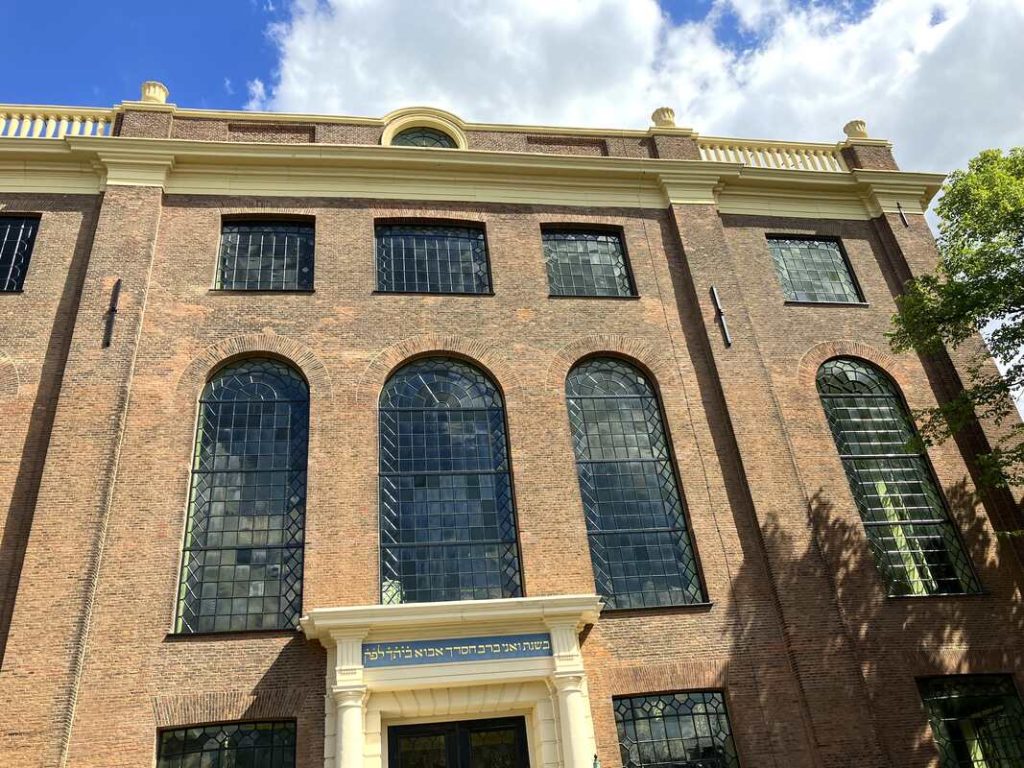
The Amsterdam “Esnoga” or Portuguese Synagogue on Mr. Visserplein#3 was built by Sephardic Jews who had fled the Spanish inquisition. The imposing building with its wooden barrel ceiling and huge copper chandeliers was inaugurated in 1675.
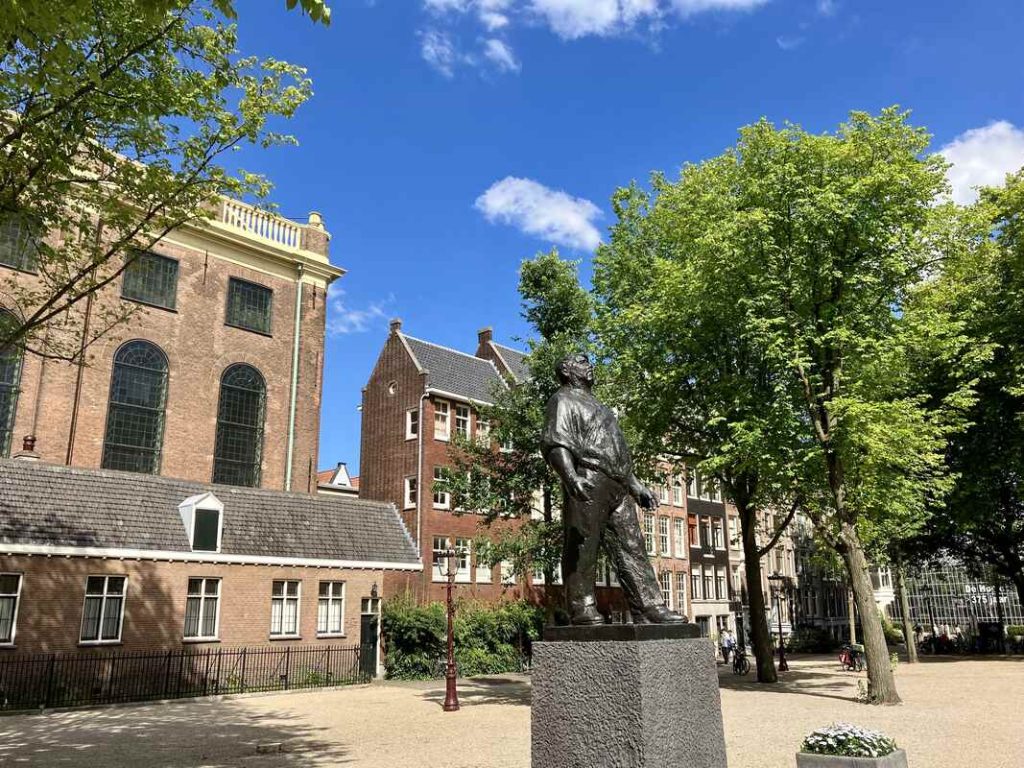
Picture credit: Jorinde
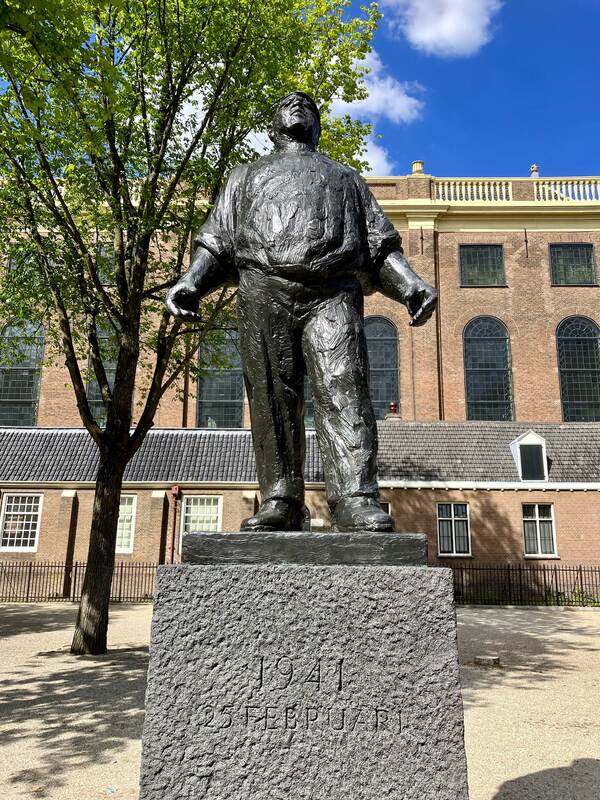
On a bench at the Jonas Daniel Meijer Square with WWII looming, Kairos and Edeline Adler had a deep discussion about religion and life.
Every year on February 25th, the February Strike and the Jewish citizens who were targeted and murdered in this neighborhood are being commemorated at the Jonas Daniel Meijer Square. The statue of the “Longshoreman” symbolizes the “February Strike” when hard-working men from the harbor organized a huge protest to defend their fellow-Jewish citizens.
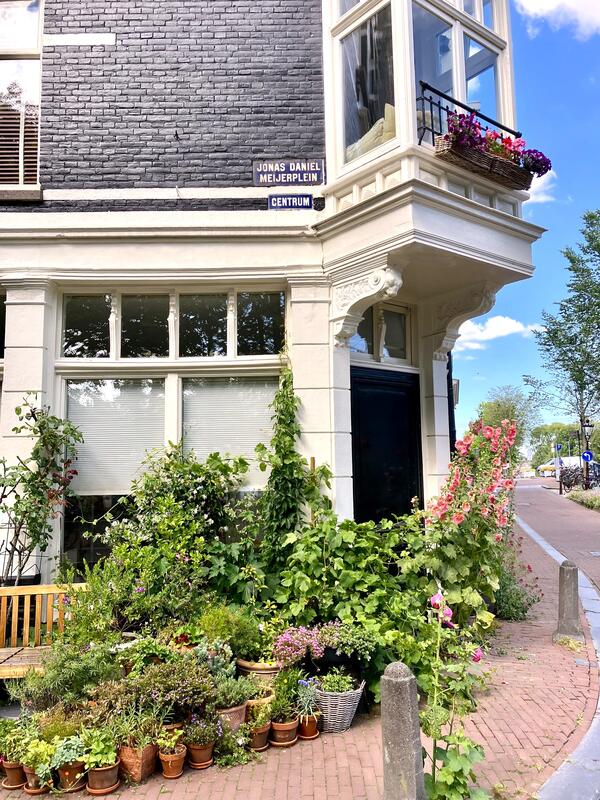
-Picture credit: Jorinde
Jonas Daniel Meijer was a prominent 17th century lawyer who fought among others for equal rights for Dutch Jews. Wanting to erase anything Jewish from the Third Reich, the Nazis changed the name of the square to “Wood Square” during the war. Looking at this picturesque little corner, I find it surreal that during WWII, just across, Jewish men were rounded up for the first transports to the death camps…
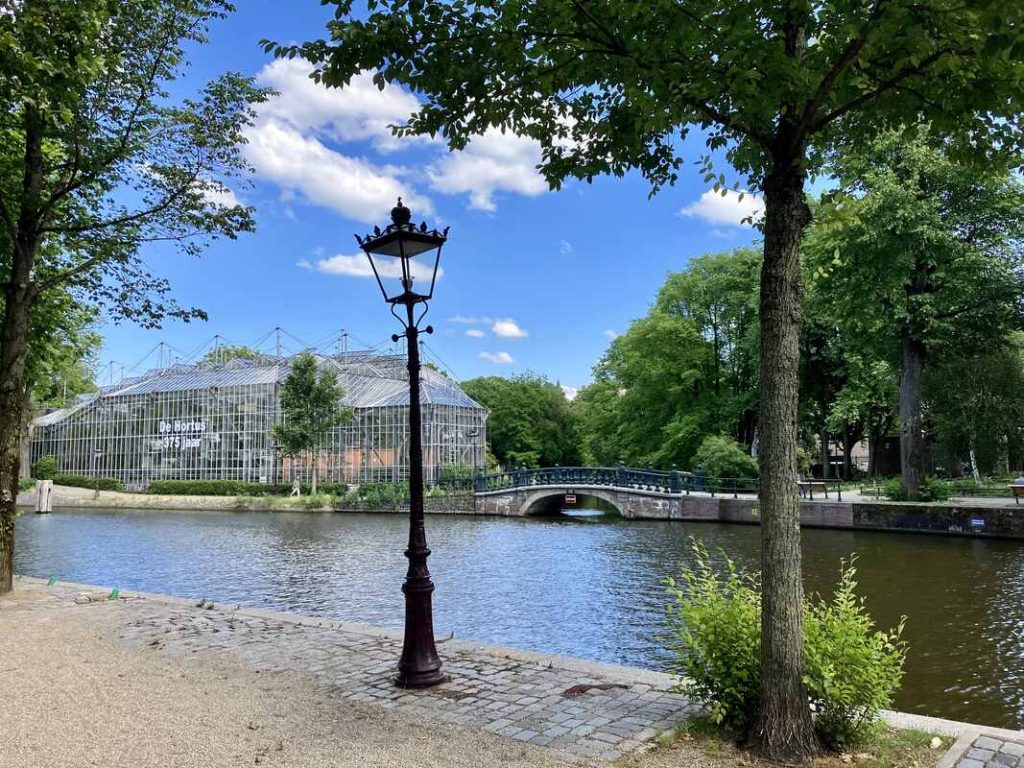
Picture credit: Jorinde
Bordering the Jonas Daniel Meijer Square is the New Emperor’s Canal (or in Dutch“Nieuwe Keizersgracht)” with across from it, the Botanical Gardens, a lovely oasis in the busy city. See: https://www.dehortus.nl/
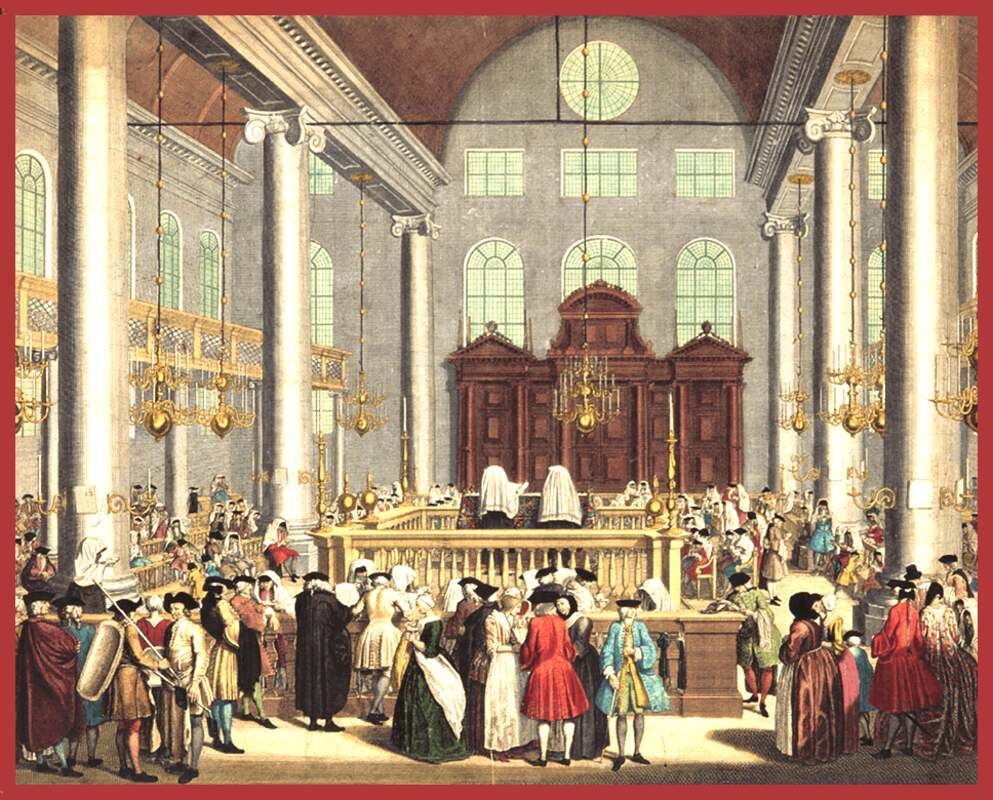
17th century print by unknown artists

Picture credits: Jorinde
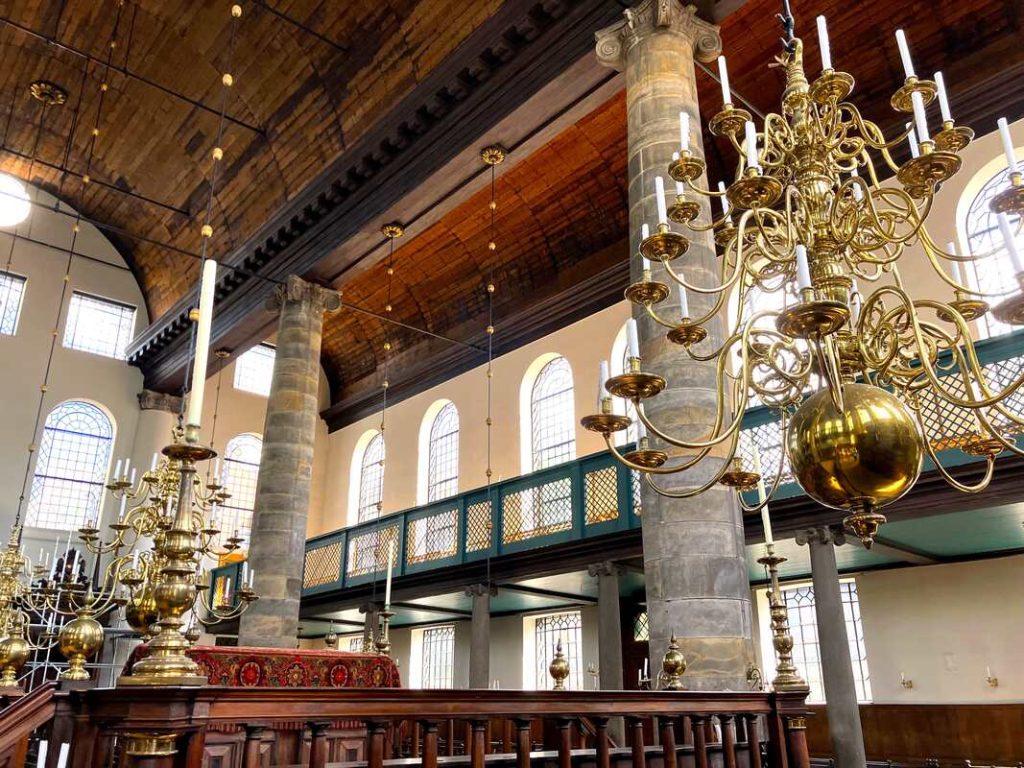
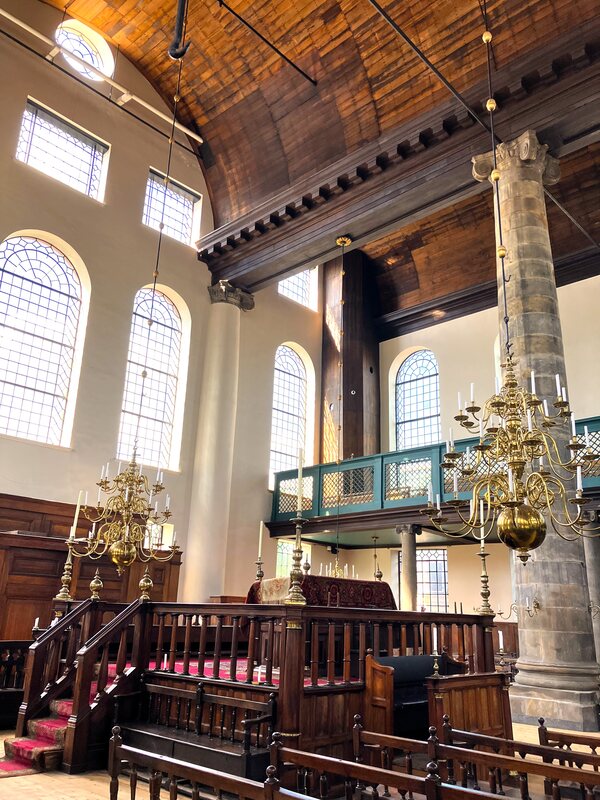

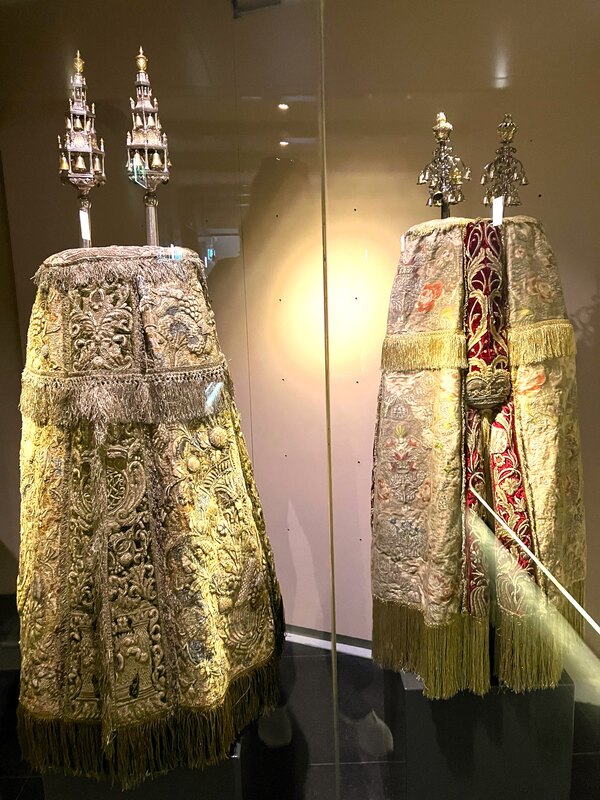
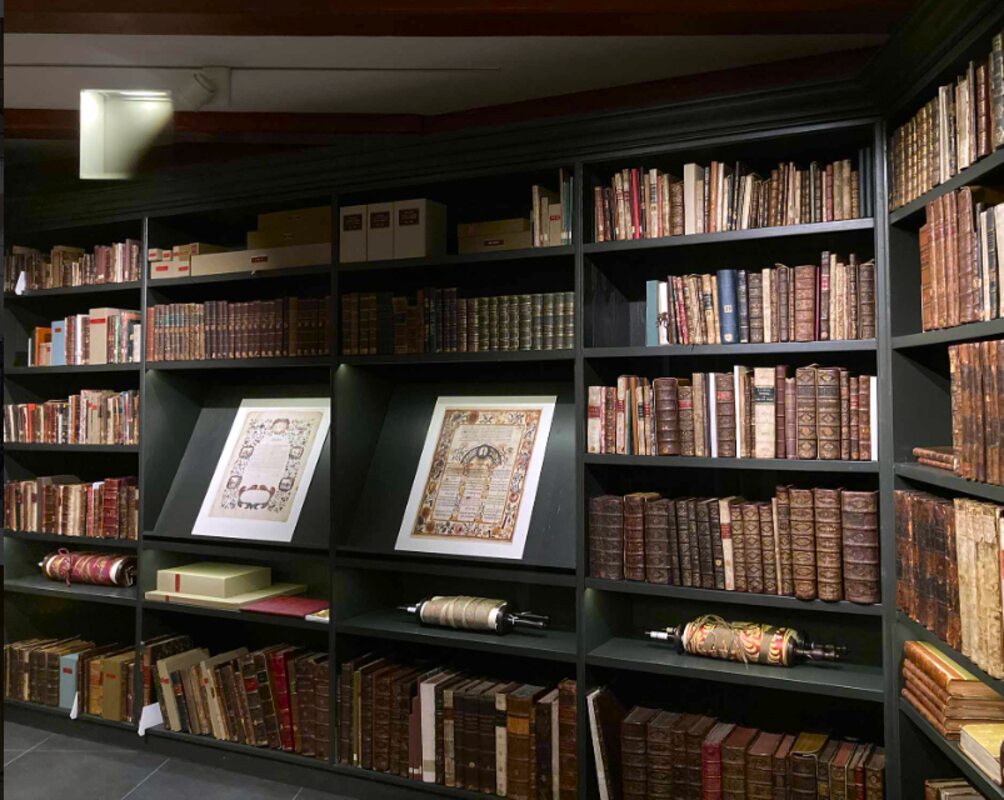
The famous “Ets Haim” or “Tree of Life” library predates the synagogue; it was started (in another location) in 1616, making it the oldest active Jewish library in the world. Even back then, it already contained books in Latin, Greek, Dutch, Spanish, Portuguese, French, German, English, and Yiddish. See: https://jewishlibraries.org/law-ets-haim/
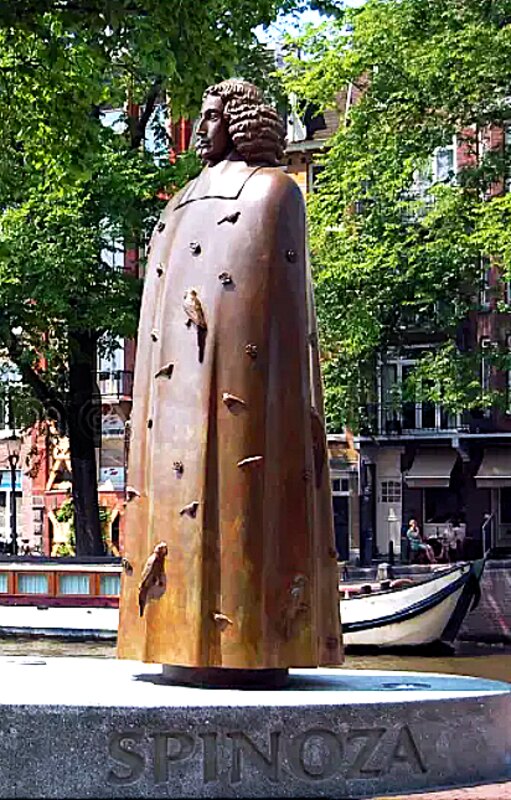
Picture credit: Jorinde
Kairos and the Jewish Edeline Adler discussed how due to religious freedom, Amsterdam boasted the largest Jewish community in Western Europe during the 16th and 17th century. Yet that Jewish community excommunicated Baruch Espinosa because he did not believe the Torah represented the laws of God, but instead saw God as the universe and life itself. Although this shocked Edeline, Espinosa became known as one of the founding fathers of the Enlightenment. Because this made Edeline angry, it was the first time that she started examining her roots and world view.
Nicolas Dings created a whimsical statue of Baruch Espinoza (on the Zwaneburgwal) with parakeets and sparrows on his robe, symbolizing how natives and non-natives should be free to be. On the pedestal not only his Dutch name can be found, but also the motto “the state is freedom.”
For more information about Espinosa in Amsterdam, see: https://amsterdamsespinozakring.nl/35-ask/engels/78-the-relation-between-spinoza-and-amsterdam

Another inspiring Jewish citizen in Amsterdam was movie mogul Tuschinski. Illiterate Polish tailor Abraham Icek Tuszyński first ran a guesthouse in Rotterdam (Holland) for fellow-Jews on their way to America.
Investing what little Tuschinski had, he converted and old church into a movie theatre, and soon had four luxury cinemas in Rotterdam. His crowning glory though was his Tuschinski movie theater in Amsterdam. As an astute businessman, Tuschinski supported both Jewish charities and Dutch patriotic endeavors. Sadly, it did not save him from destruction; on his birthday, the bombing of Rotterdam destroyed all four of his Rotterdam theaters. Two years later, he and his wife were gassed in Auschwitz, not far from where they had been born…
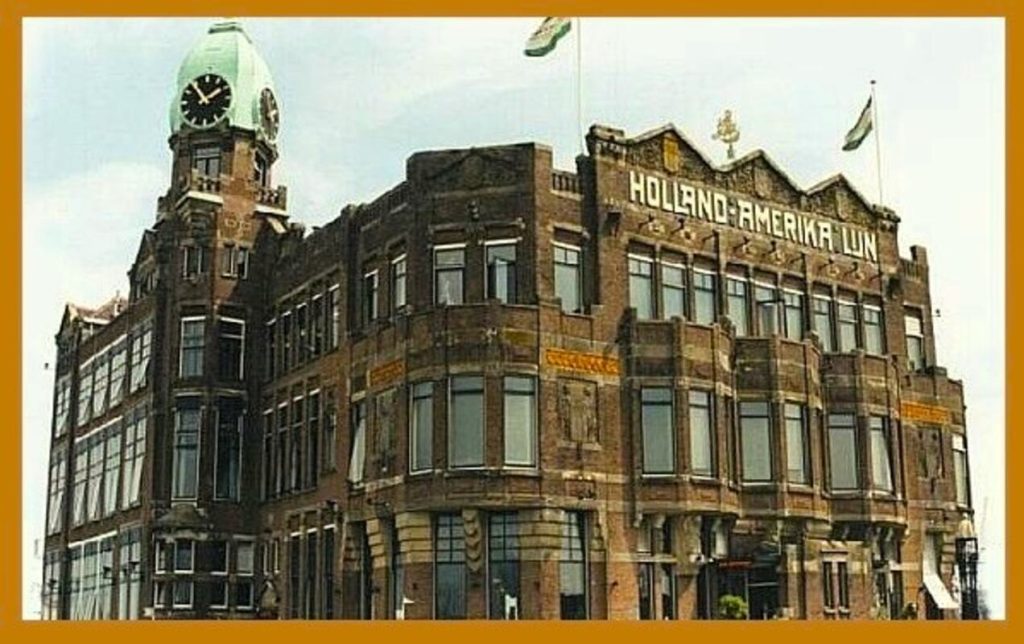
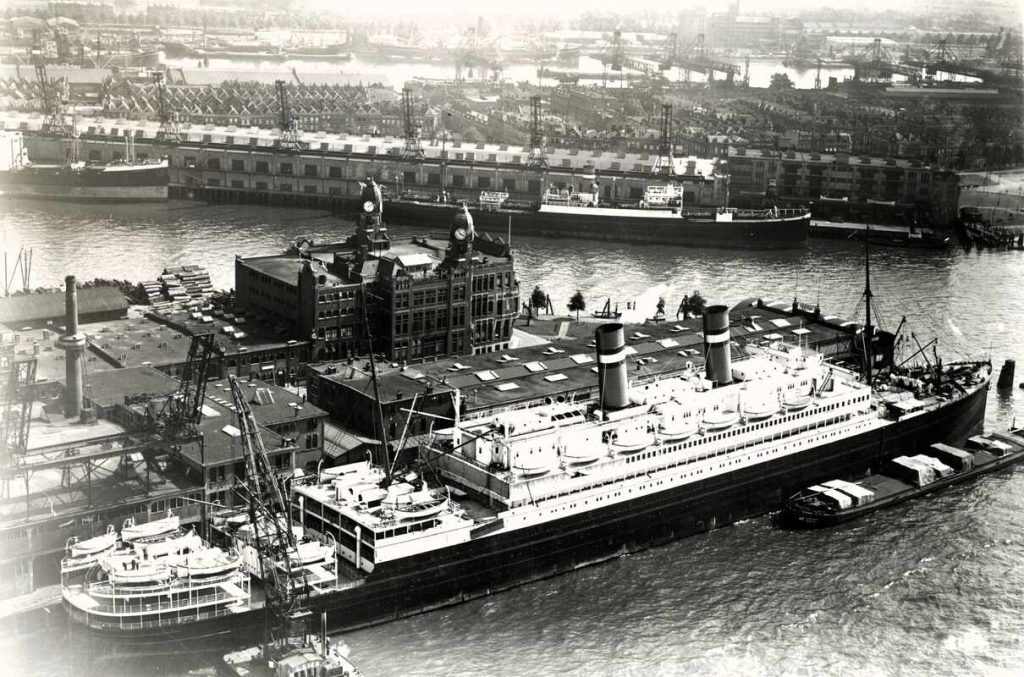
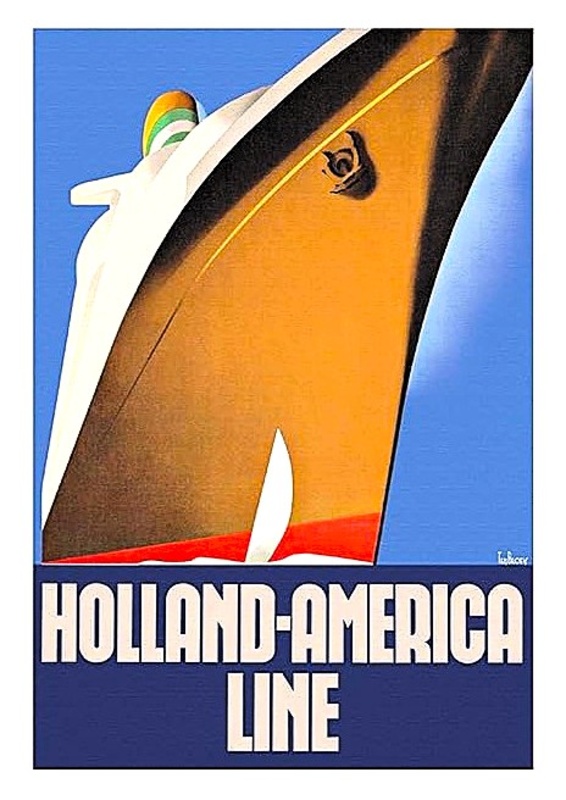
When Jakubek Hirschfeld left his little Shtetl in Wołyń (currently the border of Poland and Ukraine) at a time when the Austro-Hungarian Empire was not safe for Jews, he stopped over in Rotterdam, Holland. There he met the illiterate, but charismatic Abraham Tuschinski, who urged him to reinvent himself, starting with adopting a new name. When Jakubek bought a ticket for the Holland-America Line, he said that his name was “Jake Deerfield,” which signified he had started his new life.
Fact or Fiction:While the facts about Tuschinski are true, the meeting between Jakubek Hirschfield and Tuschinski never took place. The real Kairos did admire Tuschinski with his innovative entrepreneurial spirit.
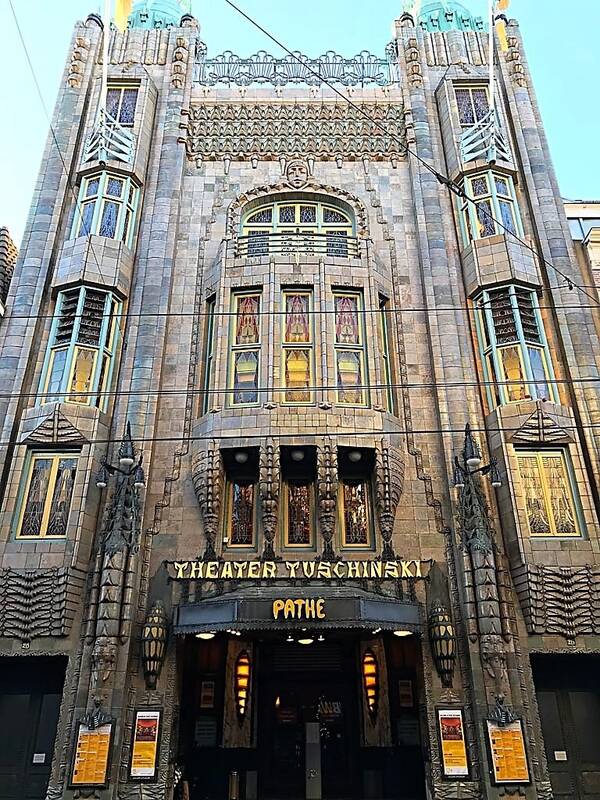
Picture credits: Jorinde

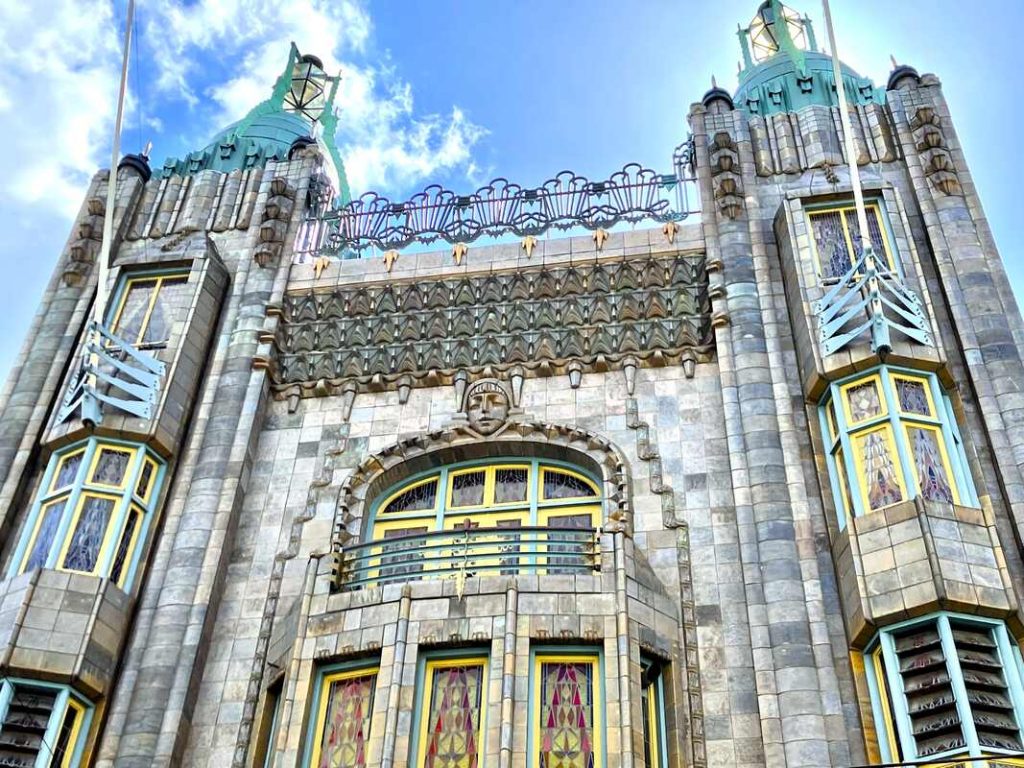
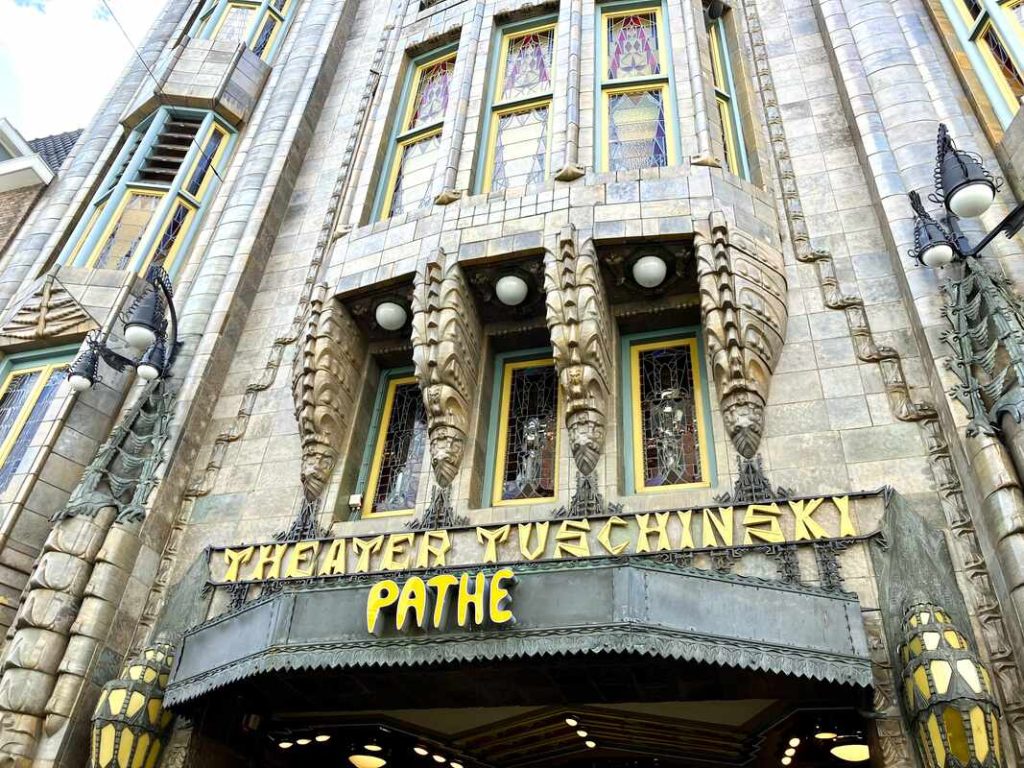
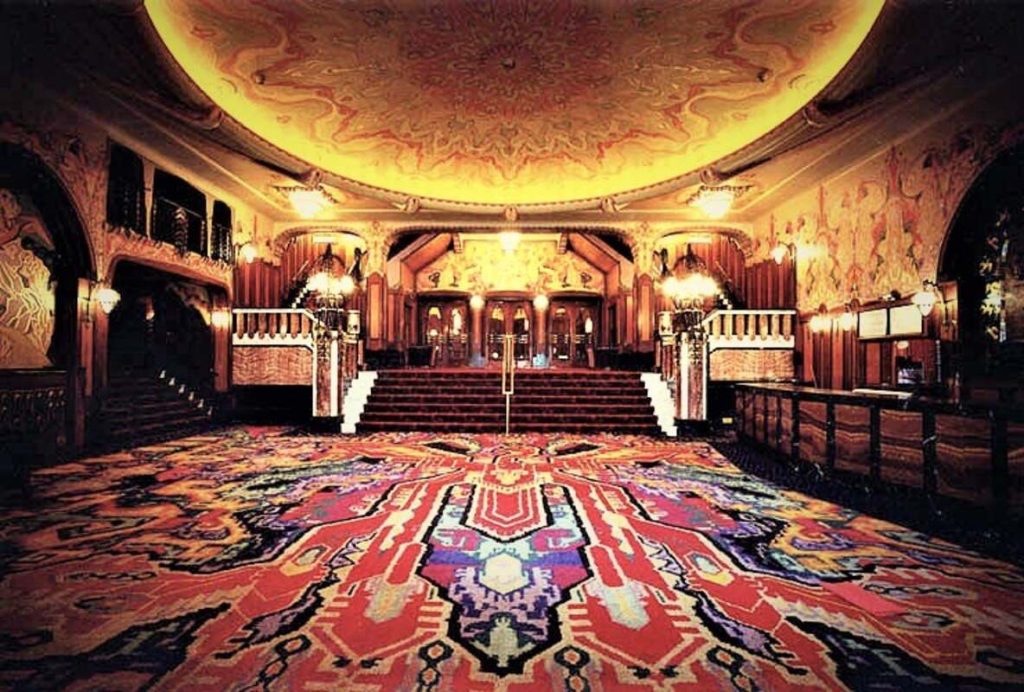
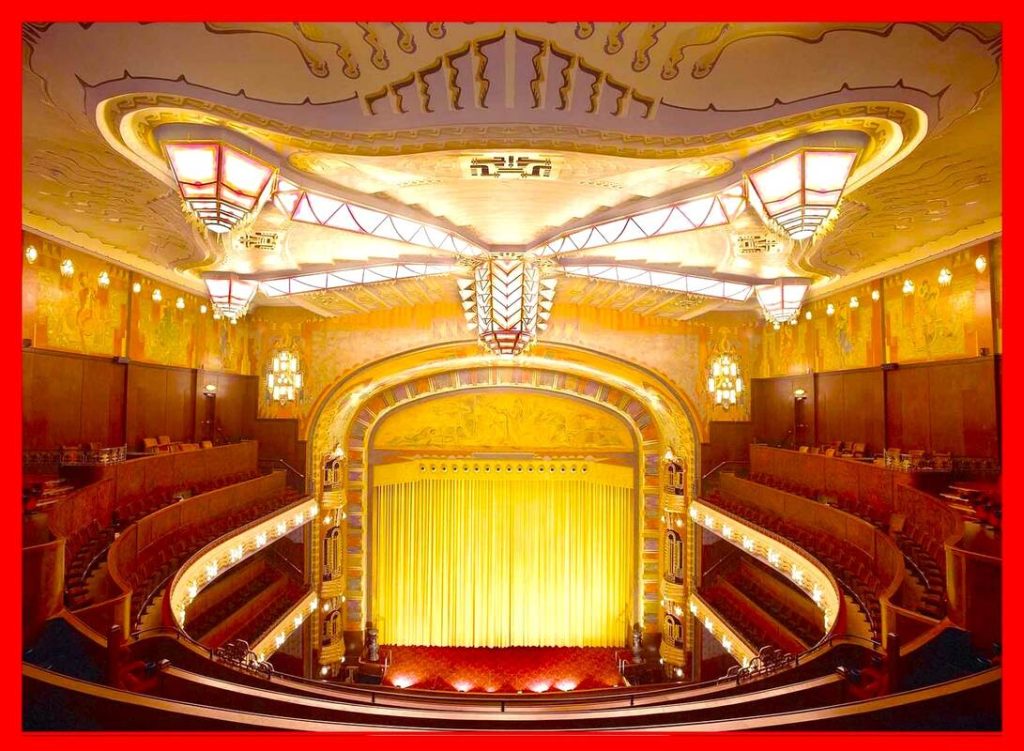
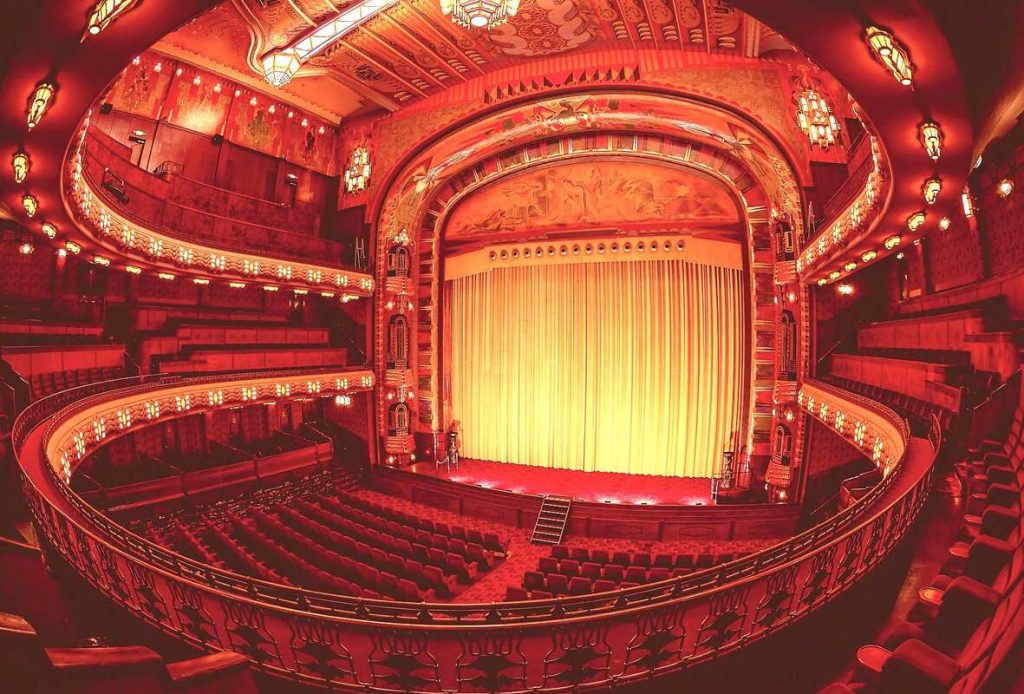
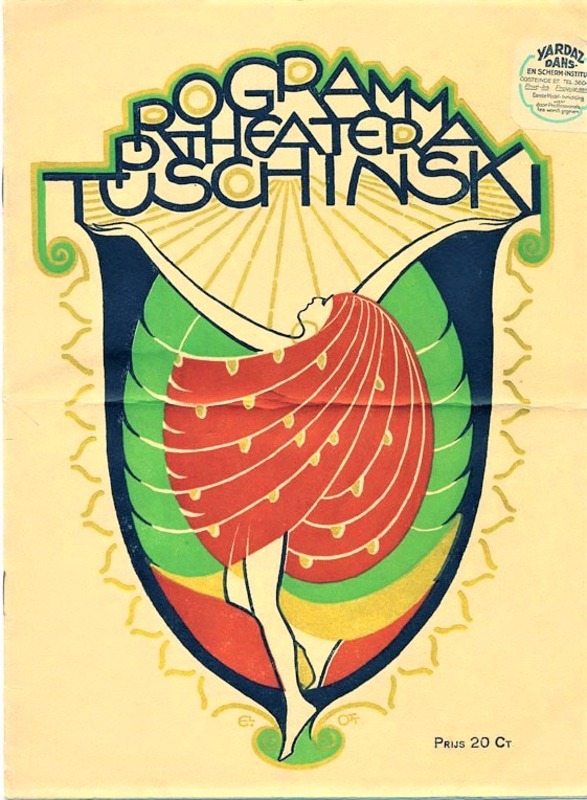

Currently called “Royal Theater Tuschinski,” the iconic movie theater opened on October 28th, 1921. After having opened four movie theaters in Rotterdam, Tuschinski bought an entire block in Amsterdam that was then known as “Devil’s Corner” due to the deplorable conditions its inhabitants lived in. He had it turned into a luxury state-of-the-art, four-million-guilder (currently about $50 million) movie theater to pamper “common” people. Its Art Nouveau style, magnificent upholstery, and air conditioning (before anyone in Europe had even heard of such a thing) made it the most famous movie theater in the Netherlands.
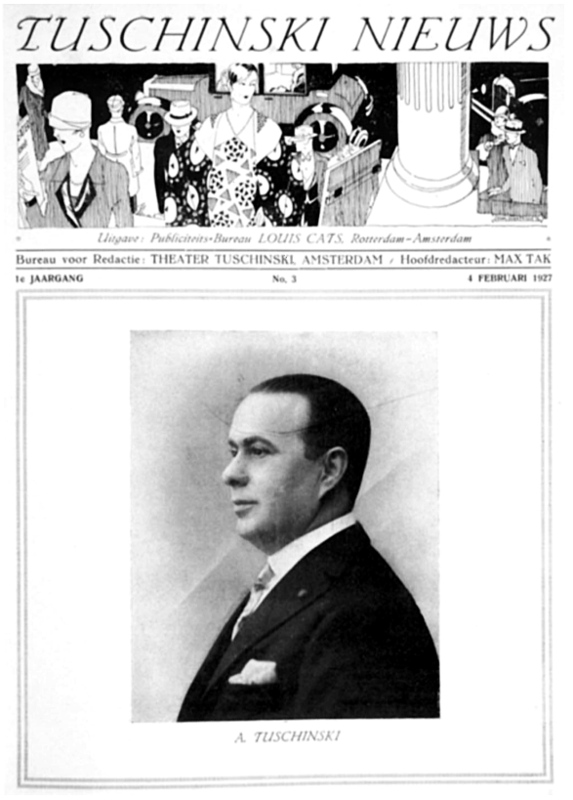
Unknown artist
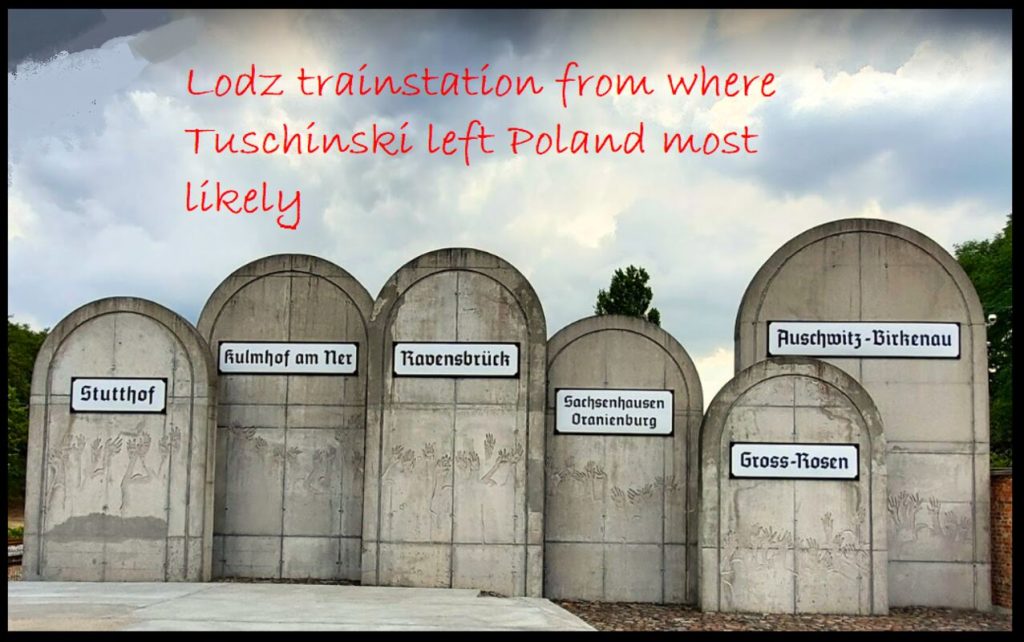
Unknown Photographer (adapted by Jorinde)
This amazingly innovative man was murdered in Oświęcim aka Auschwitz in his native country; the train station from where Abraham Icek Tuszyński had most likely left now has a memorial in the shape of giant gravestones referring to the various death camps.
similar galleries
discover
JOIN MY NEWSLETTER
To receive announcements about new blogs, images, essays, lectures, and novels, please sign up.
